21. Which Pasts, which Futures?
© 2022 William St Clair, CC BY-NC-ND 4.0 https://doi.org/10.11647/OBP.0136.21
Work to transform the Acropolis of Athens into a monument to Hellenism, old and new, began soon after the last units of the Ottoman army left in April 1833. As part of the peace settlement, the frontiers of the newly established nation-state had been formally guaranteed by Britain, France, and Russia, and were soon recognized by other countries.1 It could, therefore, be confidently assumed that another attempt at an Ottoman military reconquest would not be made in the foreseeable future.
On 29 September 1834, in the presence of King Otho, who had recently arrived in Athens from the provisional capital of Nauplia, one drum of a fallen column of the Parthenon was laid on top of another.2 The ritual was the culmination of a formal procession through Athens by members of the different ranks of Greek society, loosely modelled on what was known about processions in ancient times, such as the one pictured on the frieze of the Parthenon.3 The symbolic act of rebuilding (‘anastelosis’) of the Parthenon, albeit merely token at that time, scripted by the German architect Leo von Klenze, displayed and performed the first step in the planned rebirth (‘anastasis’) of the Hellenic nation.4
An image made in 1843 by Theodore Aligny, who had been commissioned by the Paris School of Fine Arts to report on the state of the ancient monuments of Greece at the beginning of the new era, is reproduced as Figure 21.1.
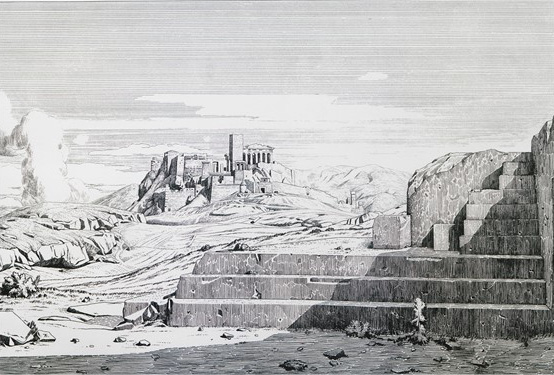
Figure 21.1. Théodore d’Aligny, ‘Athens, the Pnyx, the Areopagus, the Acropolis, and Hymettos’ (1845), etching on chine collé.5
Aligny, who was the etcher as well as the artist, offered a reasonably realistic view of the Acropolis and of the Pnyx—whose steps had been uncovered by digging financed by Lords Aberdeen and Elgin—although not of their geographical relationship. He showed a landscape that was entirely deserted, without even a few costumed humans to give the scale as had been a convention of the western picturesque.
The Acropolis revealed its many pasts, not layered as in an archaeological dig or in a conventional ‘history of art’ arranged by dates of first production, but as a historical moment, a fleeting conjuncture of moments of invention, reaction, and adaptation, of building and conservation, of knocking down and deliberate mutilation that had occurred over its many centuries. It showed, for example, the changes brought about the recently ended Revolution, with its tottering bastions, and the complex of extruding walls that had been built to renew its military capability after the brief occupation of Morosini’s army in 1687. The Propylaia was scarcely recognizable as an ancient building, since the gaps between its columns had been closed up with masonry when it had been converted into a mediaeval palace in a western style. The temple to Athena Nike, which had been largely intact when Spon and Wheler saw it in 1671, had disappeared, some of its stones reused to strengthen the defences after the retreat of the Venetian-led western European army in 1688, others taken by Elgin. The ‘Frankish Tower’, built at some time in the past then still unknown, had played a part in the Revolution and some recognized a few monuments of Roman date, notably the untenanted structure known as the monument of Agrippa on which statues of Mark Antony and Cleopatra had once briefly stood.6
A printed notice accompanying Aligny’s image encouraged its viewers to regard the scene as a historic turning point.7 Greece, it proclaimed, which had long been thought incapable of liberty, had purged its soil of its stupid oppressors, and was preparing to renew itself with marvellous zeal. Adopting the rhetorical device of speaking in real time (‘enargeia’), the image tells its viewers that it takes only a few years to efface the last traces of Ottoman domination and for the names used by Homer and Thucydides again to become as familiar to the ignorant as they already are to the learned.8 The land of Greece herself, as the clouds are blown away, is repossessing the clear light.
In 1834, no-one in authority seems to have suggested conserving the Acropolis or the Parthenon in its post-Revolution moment. The question was, what new form should it take? From contemporaneous documents, most not available until recently, we are now able to appreciate not only what was suggested and why, but the realities that inserted themselves between what was thinkable and what was practicable.9 At one end of a long spectrum was a proposal by the architect Karl-Friedrich Schinkel that would have made the Acropolis the seat of the new Kingdom, with the construction of a new marble royal palace and other modern buildings in and around the ancient ruins, as shown in Figure 21.2.
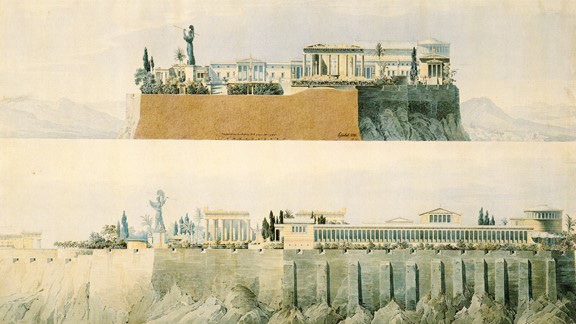
Figure 21.2. Views of the royal palace to be built on the Acropolis as proposed by Karl-Friedrich Schinkel (1834). Watercolour. Staatliche Graphische Sammlung, Munich.10
Schinkel’s proposal would have involved constructing new buildings and a full-scale attempt at a replica of the bronze statue now known as ‘Athena Promachos’ that had dominated the skyline in classical times. The ancient ruins were to be shored up and partially restored, notably by painting the marble surfaces in bright colours where it was now certain that they had been painted in ancient times. If executed, the plan would have made the Acropolis a living town with a contemporary political function, a role it had seldom played during its long history. Whether the palace would have met the requirement of King Ludwig of Bavaria, father and mentor of Otho, that it should be located at a place ‘where neither bullet nor bomb could reach it’ was doubtful—this would have likely been impossible, even with the weapons available at the time.11 However, besides the fear that the new buildings would upstage the ancient, the plan would have required skills and resources far beyond what were then obtainable locally. The plan was not financeable even with the help of foreign funds, nor, at a time when many of the population were still sheltering in the ruined houses of the modern town, was it easily justifiable.12
Schinkel may not have fully understood that, if the Acropolis were to be drastically repurposed as he suggested, the quantities of fresh water that would have to be carried up every day by human and animal power, even with the building of new conduits as he proposed, would have imposed heavy ongoing running costs. The earthenware vessels used to store fresh water kept it cool, but only enough to protect it from the constant risk of evaporation in the warm, dry air.13 In the Ottoman period, even with trees, gardens, deep soil, and tall chimneys to catch the breezes, the Acropolis had been an uncomfortable place to live, and the new king and members of government, we can be confident, would have wanted to escape to the lower town whenever they could.14
A rival proposal, made by the French Government architect Jean-Baptiste Marchebeus, would have seen an area in front of the Acropolis raised with infill from the earth and from other débris already being removed from the summit, and the building of a palace and other public buildings in an artificially flattened, enclosed space, defensible against mobs or future revolutionaries, with a parade ground, as shown in Figure 21.3.
The French plan, besides removing the cityscape of hills celebrated by the classical Athenians that linked their identity to their land, may have been driven not only by the fears of King Ludwig who saw revolts occurring in independent Greece, but by the French experience of revolutions, of which the most recent was 1830, which was soon to lead to the bulldozing of avenues through the streets of old Paris.15 The plan, which would have separated the rulers from the ruled, and was also prohibitively expensive, seems not to have been seriously considered.16 The image, like many others, exaggerates the extent to which the Parthenon was visible from ground level, and the clouds that the new medium of engraving on steel encouraged gives Athens an untypical northern look.
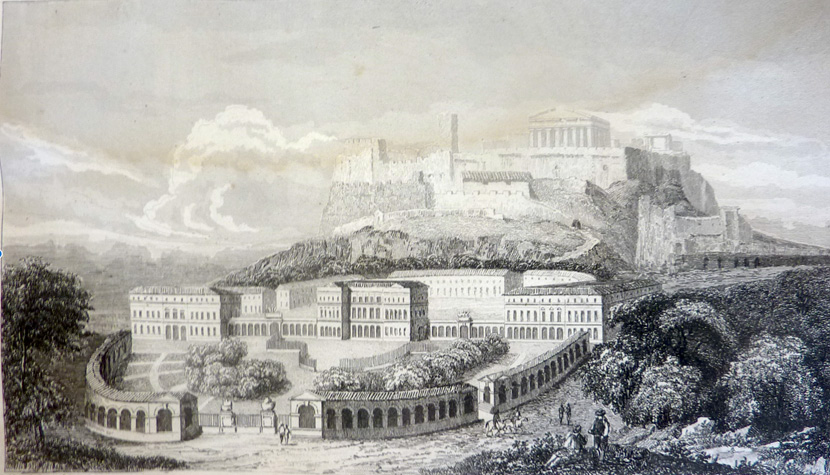
Figure 21.3. ‘Plan for a New Athens in front of the Acropolis’ Engraving on steel.17
Some voices called for the removal of Acropolis walls, on the grounds that they were ‘a sad drawback to the Parthenon’ and therefore only of interest to veterans of the Revolution.18 But that proposal, in the tradition of moderns scolding the ancients for not sharing their own ways of seeing, was politely rejected by the Regency government, who wished to preserve the ‘picturesque’ quality of the site. It seems not to have occurred to anyone concerned that the authorities in classical Athens had designed the Parthenon so as to be visible from certain viewing stations both far and near, and not from others, in particular with hoped-for effects on those who were on the move, including those participating in festival processions.19
It was soon decided that the transformation of the Acropolis would take two forms. Firstly, the Parthenon and the other classical-era buildings would be conserved and partially rebuilt; and secondly, the buildings and other reminders of the Ottoman and Frankish periods, that is, more than half a millennium of building works since 1208, would be removed. These centuries were now deemed to have been a period of foreign occupation, an interruption to the imputed continuity of ancient through to modern Greece. Like the huge Muslim cemetery in front of the Acropolis gate, which had evidently been in continuous use for hundreds of years, they were to be expunged from the built environment, and therefore from the national memory and the national story, by monument cleansing.20
The first substantial rebuilding was that of the temple dedicated to Athena Nike (‘Athena as Victory’) that was reassembled in the 1830s from the marble blocks of its walls, which had been moved by the Ottoman authorities in the early eighteenth century and were still lying nearby.21 They had been dismantled in an effort to improve the military defences of the Acropolis, whose weaknesses in the age of modern artillery had been exposed by the siege and capture in 1687. A moment during that first anastelosis, as sketched by a visitor in February 1836, is shown as Figure 21.4.

Figure 21.4. The temple to Athena Nike in the course of being rebuilt, February 1836. Lithograph.22
Figure 21.5 reproduces a sketch made by Francis Schroeder, the secretary to the commander of a United States naval squadron, on 17 July 1846 when the anastelosis had recently been completed.
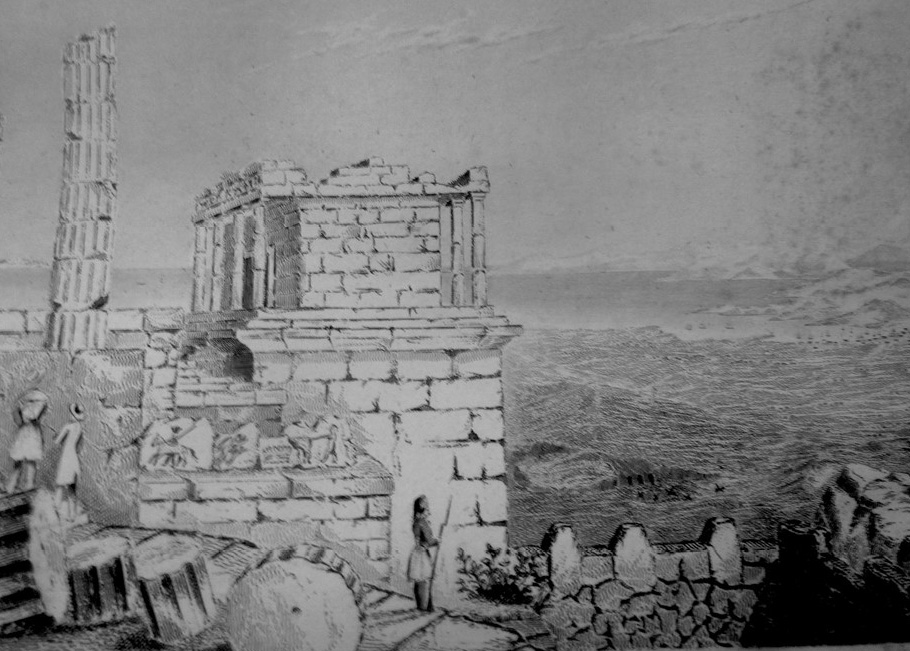
Figure 21.5. ‘The Temple of Victory’. Engraving on copper.23
Another example is shown in Figure 21.6.
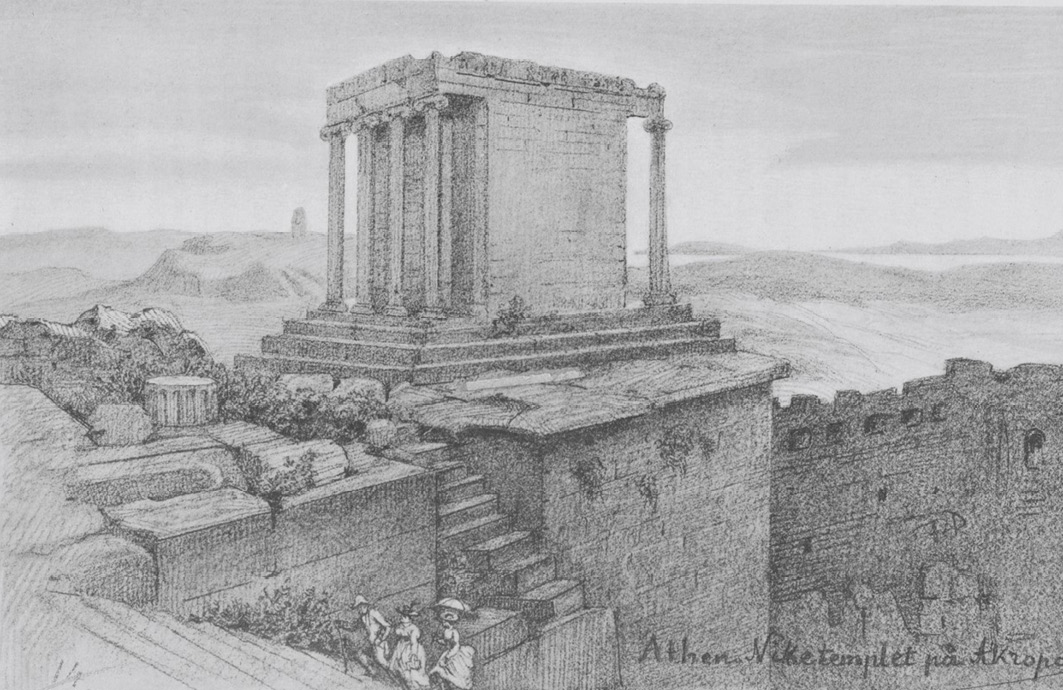
Figure 21.6. The Nike Temple. Lithograph.24
The Nike temple has since been dismantled and reassembled more than once in order to accord with a better understanding of how it had been positioned when it was first built.25
The images show how useful the platform had been, in ancient times as well as modern, for looking out from the Acropolis to the sea, the direction from which hostile forces were most likely to come, as had happened in 1827 when the Greek Revolutionaries were besieged and on other occasions back to antiquity. They bring out the long sightlines that the clarity of the air made possible, helping us to understand how, in ancient times, it was possible to imagine Aegeus, the father of Theseus, leaping to his death from the Acropolis and providing a memorable eponym for the Aegean Sea.26
To viewers in the early nineteenth century, accustomed to looking at ancient ruins as relics of the greatness of a long-gone past, the result was a pleasing reversal. The rebuilding of the Nike temple marked a shift from a policy of repair and recycling, such as had been the norm since the end of antiquity, to new ideas involving a rhetoric of national continuity and notions of inter-generational stewardship for the recently adopted ‘heritage’. By 1841 the temple looked ‘new but unfinished […] its white marble columns and walls glittering in the sun, with a splendour little short of that which they displayed when fresh from the chisels of their original constructors’.27 For the first time for over a thousand years, those in charge of the Acropolis site invited visitors to regard the ancient buildings as having a future as well as a past.28 By changing the visual presence of the past, they changed the stories that would be commonly told, and therefore, over time and by habit and repetition, the mentalities of viewers.
The four blocks of the frieze that Elgin had removed and that remained in London, although much mutilated, appear to have been designed not only for displaying the mythic scenes pictured, but so as to be seen from a particular set of viewing stations by those approaching the Acropolis through the main gate on the western side. Figure 21.7, for example, the most visible, appears to show a large shield or mirror attached to a tree, such as might be used for signalling with the help of the sun’s rays.
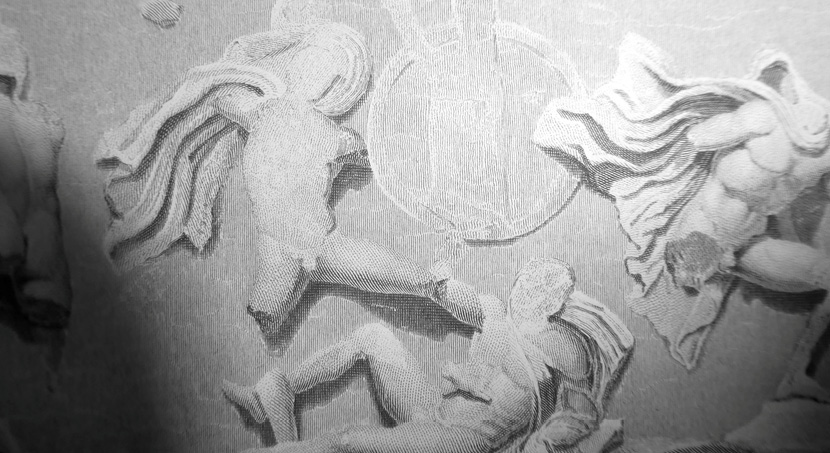
Figure 21.7. Part of the west-facing slab of the temple to Athena Nike frieze.29
That in ancient times the Acropolis was routinely used as a place from which to look out, as well as to be seen and to communicate—sometimes with the help of bonfires—appears to be confirmed by a remark attributed to Antigonus by the second-century-CE author Plutarch, albeit as a metaphor, in his work on Demetrius: ‘Athens, the beacon-tower of the whole world, would speedily flash the glory of their deeds to all mankind’.30
‘I confess I felt ashamed of it’: Changing Attitudes to the Removal of Antiquities
In the course of the nineteenth and early twentieth centuries, the three other classical-era buildings on the Acropolis of which substantial portions still remained standing were partially rebuilt. The extent of the changes is shown by before-and-after photographs that Nicholas Balanos, who had been appointed the architect in charge of the programme in 1895, proudly published in 1936, almost exactly a hundred years after the end of the Greek Revolution. They are reproduced as Figures 21.8 and 21.9.
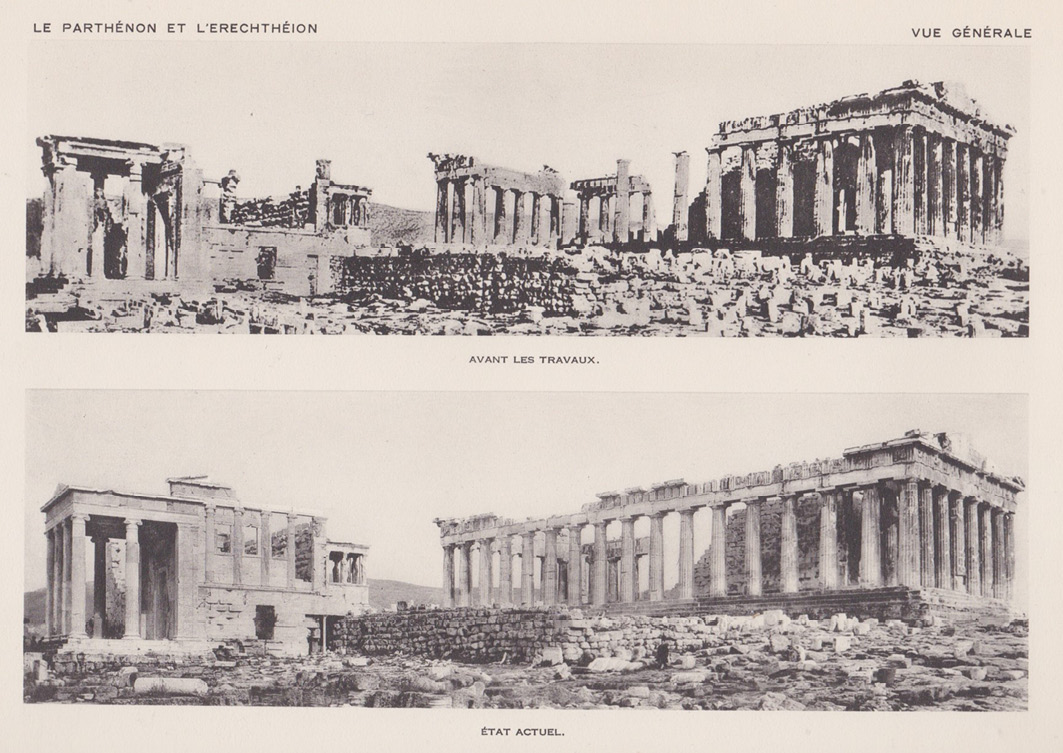
Figure 21.8. Parthenon and Erechtheion, before and after. Photographs.31
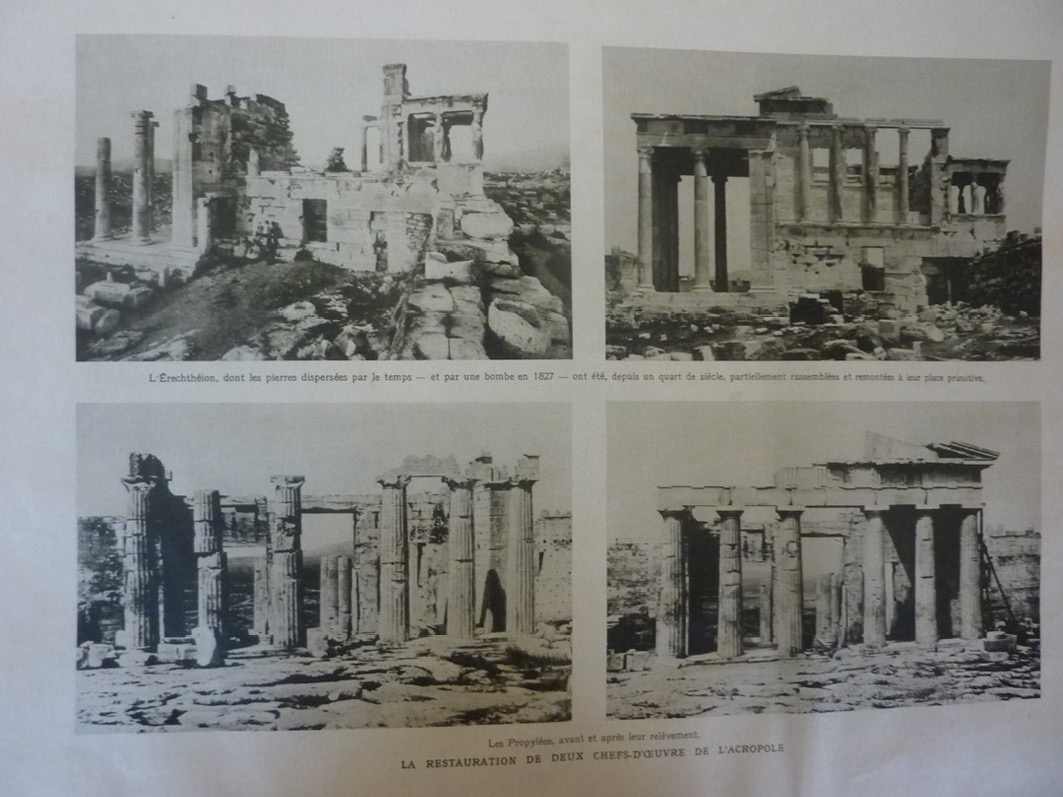
Figure 21.9. The Erechtheion and the Propylaia, before and after. Photographs c.1929.32
In May 1833, just one month after the Ottoman army left, a group of tourists visited Athens travelling on board the Francesco Primo, one of the new steamships that were transforming travel not only within the Mediterranean and across the oceans, but also, by navigating the Danube, from the heart of continental Europe.33 The party of about sixty included the brother of King Otho, princes, marquises, counts, barons, and other titled nobility, women as well as men, drawn from half a dozen European countries, as well as architects, medical men, and military officers; it was as representative a sample of the community of leaders of ‘Europe’ as could be assembled. All could see that the Parthenon still stood, its brown ancient surface, scarcely flecked during the Revolution, offering a sharp contrast to the white gaps that marked the parts of the building from where Elgin’s agents had prized out pieces from 1801 until 1805, the year when the Ottoman Government ordered them to stop.34
As was remarked by C.R. Baynes, a British military officer who was present, the reaction of most visitors was now much the same:
I confess I felt ashamed of it, when in company with an American and a Greek I first visited the Acropolis. The most plausible excuse given for their removal is, that it saved them from destruction by the Turks. Now, setting aside the question whether the Turks, having spared them so long, would at that particular time have destroyed them, we must confess the invalidity of the pretext, unless it be held lawful to rob whoever we may choose to suppose in danger of being robbed by others; or at least no such proceeding could be justified, save by a sincere intention and purpose on the part of the anticipating pillager, to restore the property when the danger which he observed threatening it, should have passed away.35
The question ‘Who saved the Parthenon?’ now presented itself directly to the eyes of a growing and influential international constituency in the same stark terms as it had to Stratford Canning just over a year earlier.36 And, as with Canning, the direct juxtaposition of the damage Elgin’s agents had done with the rhetoric of salvation brought about, in the minds of many, a change of opinion. As Baynes wrote: ‘If we [the British] do not replace them, we act as an individual who, having taken part of his neighbour’s property into his house to preserve it during a conflagration, should refuse to return it, when the flames were extinguished, and he stood most in need of it’.37
Because, in the clear microclimate, the difference between the brown of the historic marble surface and the glistening white of the subsurface from where Elgin’s agents had cut out sculptured pieces remained stark for most of the nineteenth century, some viewers drew other conclusions from what they had been told at home. As was remarked in 1834 by Adolphus Slade, the senior naval officer who had realised that the Ottoman forces had aimed their guns so as to avoid damaging the ancient monuments: ‘No words are strong enough to designate the cant preached the last thirty years […] We [the British] have been victims to the grossest deception.’38
And soon, we seen signs of a hardening of attitudes among the local population. In his Memoirs, Makriyannis tells a story of an episode during the Revolution. As he wrote in the rough demotic style of a self-taught palikar, when he came across soldiers who were preparing to sell ancient statues to Europeans: ‘I took the soldiers aside and spoke to them: “Even if they give you ten thousand talara, don’t allow for these statues to leave our homeland. These are what we fought for.”’39
The first law forbidding the export of antiquities from independent Greece, which came into force on May 1834, presented the philhellenic claim to continuity as acknowledged fact: ‘All objects of antiquity within Hellas, being works of the ancestors of the Hellenic peoples, are considered national property belonging to all Hellenes in general’.40 Among the collections exported before the ban came into force was that made by agents of Lord Strangford, whose efforts as British ambassador in 1821 to secure an imperial firman (vizieral letter) to prevent the destruction of the Parthenon and other monuments have been described earlier in this book and the main documents made available.41 During the Revolution Strangford had employed an agent, Luigi Canquitz of Smyrna, to buy antiquities on his behalf, his position as British Ambassador giving him opportunities, as it had for Elgin, not available to others.42 No record has been found of what formed the Strangford collection, nor of how and where the pieces were obtained. It was a typical assortment of ungrounded and unprovenanced pieces. Among those that later made their way to the British Museum, some by gift, others by purchase from Strangford’s family, was a marble archaic dedicated male figure (kouros), the ‘Strangford Apollo’, reported to have been obtained from the small Aegean island of Anaphe, which had been assigned to independent Greece when the frontier was settled.43 Another was the so-called ‘Strangford Shield’, made of Pentelic marble that suggested it had been made in Athens.44
Foreigners did not however pay much attention to the spirit of the new law. In early 1835, for example, Lord Prudoe, asked James Dawkins, the British Government’s representative in Athens, to intervene to allow the export of his collection of antiquities as an exception on the grounds that they had been acquired before 1822, the year when a provisional Greek Government had first been formed.45 In the areas that remained under Ottoman control, exports, with or without firmans, continued uninterrupted much as before.
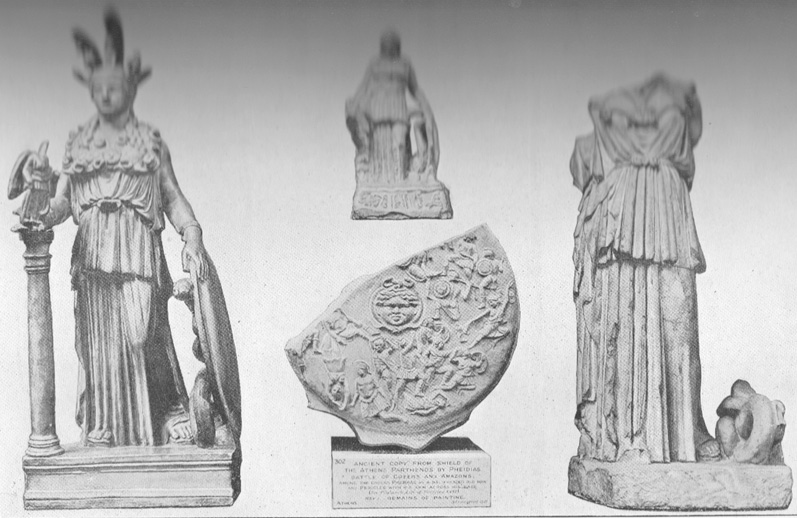
Figure 21.10. The ‘Strangford shield’ with a statuette showing where a shield was situated on the colossal cult state of Athena Parthenos. Composite photograph of post-classical pieces held in different places.46
In post-independence Greece too, occasional exceptions to the law against exports were allowed. In 1890, the American preacher, Thomas de Witt Talmage, who carried a letter of introduction from Grover Cleveland, President of the United States, was permitted to export a sculptured piece of the Parthenon that has since disappeared.47 In 1858 Cornelius Felton, President of Harvard University, was officially presented with another piece also now lost.48 From elsewhere in Athens, Felton removed at his own expense a piece of marble, ‘the fragment of a tablet, or statue, or seat, ‘that he intended to have cut and polished with the word Pnyx’, also since lost.49 He was, however, not allowed to buy ‘the highly ornamented sarcophagus conventionally called “the tomb of Theseus”’ that for years stood outside the Theseion.50
In the 1850s, an architectural block from the Parthenon was officially sent to Washington, D.C. to be incorporated into the monument then being built to memorialize George Washington. It has a Greek inscription, of which the following is a translation: ‘To George Washington, the hero, the citizen of the new and illustrious liberty: the land of Solon, Themistocles, and Pericles—the mother of ancient liberty—sends this ancient stone from the Parthenon as a testimony of honor and admiration.’51 At the time the Washington monument was built, slavery, and trading in slaves, was still an integral part of the society, the law, the economy, and the self-fashioning of most of the leaderships in the southern states, as it had been in classical Athens.
Some time between 1847 and 1853, in an effort to reduce pilfering, Kyriakos Pittakis, the superintendent of the Acropolis, arranged for the fragments lying around on the summit to be collected and built as walls. John Gadsby, a professional lecturer and journalist, noted in 1858 how things had changed from his earlier visit in 1847: ‘so that instead of having to scramble over ruins and being able to pick up divers pieces as in 1847, we now had a regular footpath, and had no chance of picking up a scrap. Indeed had there been any pieces lying about, we could not have taken them, as a watchman kept close to our heels the whole time we were there.’52 The Pittakis walls can be seen in the wood engraving at Figure 21.11.
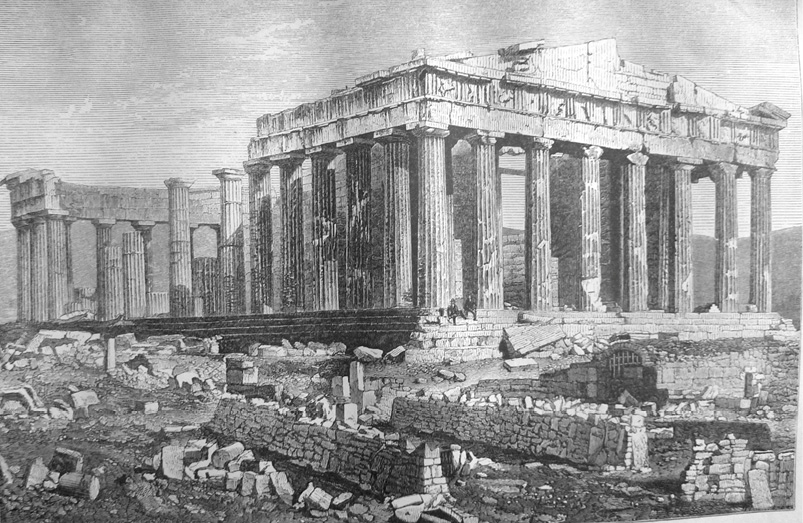
Figure 21.11. ‘The north west angle of the Parthenon in 1855’. Wood engraving by E. Whymper.53
A woodblock copied from a photograph, once manufactured, could, by this time, produce an almost unlimited number of impressions and carry the same image to geographically widely separated viewerships. As a piece of capital plant, like a steel plate, it could be worked to produce ever cheaper copies in a wider range of media, including newspapers, for decades after the actuality had changed. The same image appears, for example, in almost identical form in books and magazines in France, Germany, and the English-speaking world in the later nineteenth century, either pirated or by arrangement.54
When we recover its history as an image, it emerges that it was copied from a photograph made by James Robertson, reproduced as Figure 21.12, taken on the spot at a date not earlier than the latter part of 1853, making it one of the earliest photographs of the Parthenon but also one of the most long-lived in its obsoletizing effects.
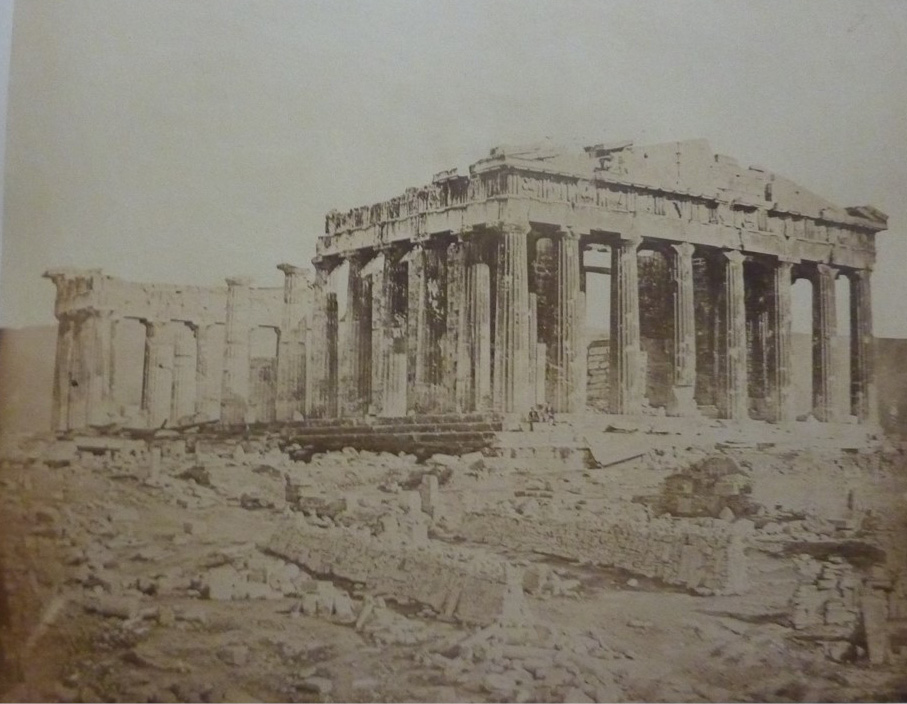
Figure 21.12. The Parthenon. Photograph by James Robertson, undated but 1853 or 1854.55
The photograph, made by a technology of light on chemicals without direct human intervention, records features that have since been removed, notably the brick vault that covered a water storage cistern, thought to be of Byzantine date, that had played a decisive role during the sieges of the Acropolis in 1821/22 and 1826/27.56 And it raises another question. In building the walls of fragments, Pittakis claimed not only to be halting the pilfering but undertaking an anastelosis. As he wrote soon after: ‘after exiting the Propylaia one arrives at the Parthenon by a road bordered by two walls four English feet high, that took the visitor on a detour to the east end, although with a gap from which to visit the Erechtheion’.57 What appear to be a few large, and therefore ancient, shaped marble blocks can be seen in the wall. The wall was also noticed by the French architect Antoine-Marie Chenavard who visited in September 1843.58 If, as is possible, Pittakis had identified the remains of an ancient wall, we may have an indication here of how, in ancient times, the many formal processions were funnelled past the Parthenon to the open space beyond where ceremonies occurred and where both the Erechtheion and the east end of the Parthenon could be viewed by the processioners.59
Understanding the Parthenon’s Engineering
The marble used in in the early nineteenth-century restoration and conservation programmes was mostly newly cut from the quarries of Mount Pentelikon that were brought back into use for the first time since the end of antiquity. However, around 1897, when war broke out between Greece and the Ottoman Empire, and the supply of new marble from the quarries was interrupted, Penrose suggested to the Greek authorities that the programme could instead use the many pieces of marble then still lying on the ground.60 On the face of it, the suggestion that modern masons should sink their chisels into the very marble that had been selected by the ancient quarrymen and carved by the ancient craftsmen, and that was still as crisp as it had been when first cut, was an abnegation of all that Penrose had stood for.61 It was by the careful measurement of the pieces found on the ground or in excavations, as well as of those still on the buildings, that he and John Pennethorne, another architect working independently, had established that the many deviations from the orthogonal on the buildings were not the result of imperfect workmanship or of dislocations caused by earthquakes and explosions, as had been the understanding hitherto. The divergences, it was now established, had been deliberately introduced by those who designed the ancient buildings in order to seduce the eye/brain of viewers into believing that what they saw was more ‘realistic’ than it actually was.62 The ancient designers and builders were, in this respect, acting in accordance with what, within a mistaken theory of extramission, was based on a more sophisticated understanding of the neuropsychology of perception and cognition than had been available to even the most knowledgeable of then modern architects. Indeed it was now appreciated by some that it was because the western architects who had built in the neo-Hellenic style in Britain, the United States, Germany, and other western countries had made the lines orthogonal that the resulting buildings, for all their grandeur, had never matched the effects on the viewer of the Athenian buildings that they had used as models.63
Two vignettes, inserted in Penrose’s book, reproduced as Figures 21.13 and 21.14, show the efforts that he and his assistant went to in order to drop their plumb lines to make exact measurements of the deviations from the orthogonal. In the case of the column of the temple dedicated to Olympian Zeus, at seventeen metres high one of the biggest temples constructed in the ancient world, a naval gunner fired a bolt with a line attached that enabled a rope-ladder to be hauled up. Since, at that height, even the lightest breeze swayed the plumb lines, Penrose concluded that, in order to achieve the needed exactitude, the ancient builders must have used the even more difficult technology of water levels.64
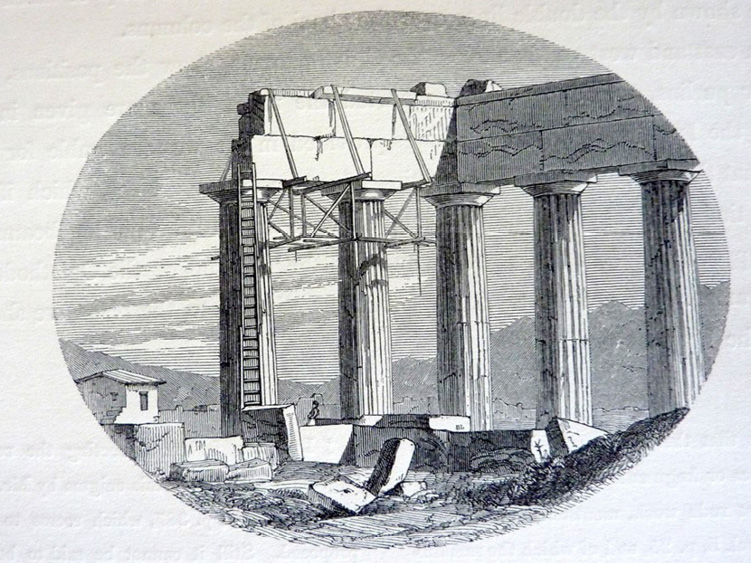
Figure 21.13. Measuring the deviations from the orthogonal of the Parthenon columns. Engraved vignette in Penrose’s book.65
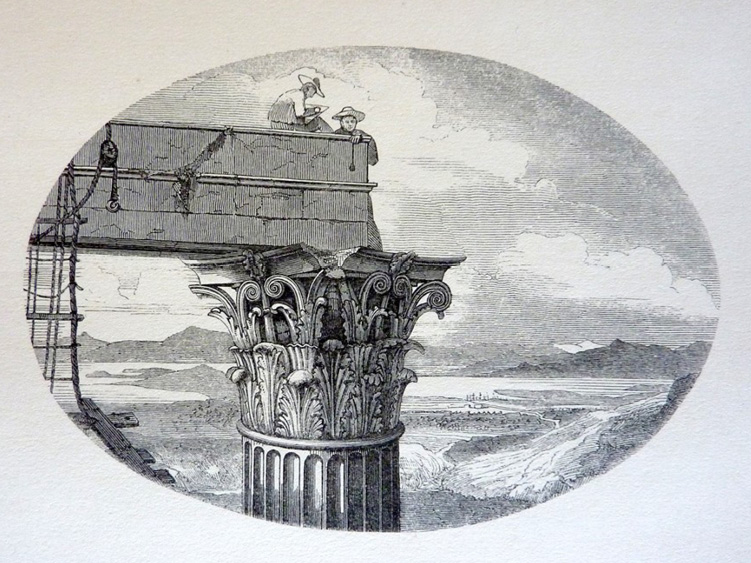
Figure 21.14. Penrose and his assistant with plumb lines on the Temple to Olympian Zeus. Engraved vignette in Penrose’s book.66
It gradually emerged that there was scarcely a straight line anywhere on the Parthenon, nor indeed on any large Hellenic public building.67 Nor were the deviations from the orthogonal trivial. In 1749, Lord Charlemont, with the help of an assistant and measuring instruments, had thought that the measured difference of two inches from the ‘true’ was an excusable and trivial error.68 In Athens every fragment of a carved column or cornice, indeed every piece of a marble block with an ancient surface, it was gradually realized, was not only unique, but assignable to the place that it had occupied when the buildings were first erected. In Pennethorne’s words of 1844, when the measuring had just begun: ‘The architectural remains of the Acropolis of Athens, when steadily contemplated and investigated, are equal to many thousands of written records; and out of them may still be collected the elements, and all the mathematical principles and calculations which guided Greek architecture.’69 The French architect Lucien Magne, who organized an international conference on the Parthenon in Paris in 1895, was able to declare, overturning centuries of received wisdom, that the evidence of the stones was more reliable than the words of Vitruvius, the author of the only work specifically devoted to architecture to have survived from antiquity.70
Over several weeks during August 1853, Athens was struck by a series of earthquakes in which the recently built marble buildings of the town were damaged, and one of the columns of the temple to Olympian Zeus fell, but the ancient ruins on the Acropolis were apparently undamaged. It was then that the bastion, hurriedly erected by Odysseus Androutsos in 1822 to protect the tunnel that gave access to the fresh water spring, partially collapsed, only to be finally removed after another earthquake in 1894.71 The episode tended to confirm the guess that the ancient monuments must have frequently withstood other, perhaps even more severe, shocks during its long history.72 The Parthenon, it was now impossible to dispute, had been damaged less by geotectonic than by geopolitical shifts, of which the damage done by the bombardments of 1687 by the late-crusader army led by the Venetian Morosini, and the removals by Elgin’s agents, were the most severe for over a thousand years.73 The old cliché that the damage had been caused by ‘Time and the Turks’ was again shown to have been ahistorical.
The discoveries also revealed that those responsible for the construction had solved another of the local problems of the site: the fact that the Acropolis stood on a geological fault line. Studying the columns of the Parthenon as they lay on the ground revealed the ways in which the buildings had been so effectively proofed against earthquakes that a large section of the building had been able to survive the explosion of 1687. Vital to the survivability were the plugs, ‘empolia and poloi’ inserted between the column drums that enabled the energy of the upward shock of an earthquake to be absorbed.74 Made of olive wood, and others perhaps also of cedar, set in lead, an example is shown diagrammatically in Figure 21.15.
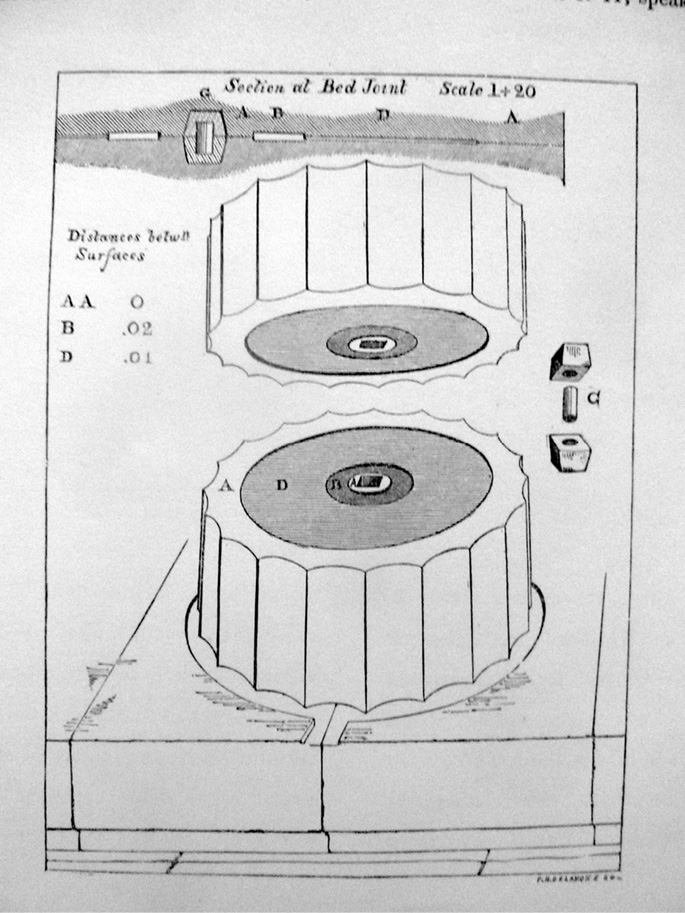
Figure 21.15. ‘On the ARMONIA or Joining of the Stone in Greek Architecture’. Engraving of a drawing by Penrose.75
What most astonished those who first examined the plugs was that, so finely cut was the marble, and so hermetically sealed were the joins, that even after two thousand two hundred years, the wood inside was only a little more dry and brittle than it had been in its natural state.76 Nor did the care given to the sealing serve only to give viewers the illusion that the columns of the Parthenon were cut from single pieces of marble. Preventing even a few drops of water from entering the cavity prevented the wood from sprouting and expanding, as the Athenians of the classical era knew.77 Achieving such precision required the marble not only to be carved to a high specification but polished smooth with emery imported from Naxos and, with the resulting dust, endangering the sight of marble workers.78
What was not noticed by the nineteenth-century architects and archaeologists was that in the Erechtheus by Euripides, of which large fragments survive, the plug was used as a political metaphor. As the character of Praxithea, the queen, declares: ‘a person who moves from one city to another is like a peg badly fitted into a piece of wood, a citizen in name but not in action’.79 In this xenophobic remark, although the play is set in mythic times, we hear a contemporary comment on classical-era politics—perhaps connected to the influx of foreigners who were employed in the public works programmes. In 450 BCE, Pericles had persuaded the Athenians to pass a law that restricted citizenship to men who were born to parents who were Athenian on both sides, a measure which, according to near contemporaries, did much to advance his political career, but that is also hard to reconcile with the rhetoric of welcome put into his mouth by Thucydides in the Funeral Oration.80 In a passage in the Ion by Euripides, we overhear characters glorying in the technical terms employed in the use of specialized tools.81 At a time when many Athenian citizens were involved in the building industry not only as workmen but as members of the commissions that set the designs, supervised the construction, and audited the results, it should be no surprise that the public discourse employed metaphors from the building industry as well as others drawn from the natural environment, agriculture, animal husbandry, transport, and war.82
When in 1895, following another earthquake, it was discovered that, on that occasion, the Parthenon itself had shifted, the Greek Government set up an international commission of three experienced architects, all with previous knowledge of the building, to examine the fabric, one each from the three western European countries who were most up to date, had most experience, and who were also most sympathetic.83 And there is other evidence that the neo-Hellenizing of Athens was regarded as an imported rather than an indigenous project. In 1883, half a century after independence, Panagiotes G. Kastromenos complained that his fellow countrymen were indifferent to the monuments of Athens ‘which our noble ancestors have bequeathed to us.’ In attempting to offset ‘our darkness and ignorance’ by publishing the first guide to be written in the Greek language, he attributed the neglect to the fact that ‘we Greeks find ourselves admiring more the European travellers who admire these extraordinary works of Architecture and Sculpture than the works themselves for their own sake’.84
To their dismay, the three experts discovered that the porch at the west end of the Parthenon, which was now the largest and most precious part of the building to remain largely intact and was saved by an imperial firman in 1805 from having its sculptural blocks cut out by Elgin’s agents, was in imminent danger of collapse. It turned out, as the architects examined and measured the cracks in the stonework, that the removal of most of the heavy sculptural pieces from the pediment by Elgin’s agents had redistributed the weight and that the change was putting intolerable strain on the architraves. The ancient architects and civil engineers, it was again confirmed, had not only used their knowledge of civil engineering to built a visual masterpiece but had devised an elaborate complex of interacting weights that had enabled the building to survive innumerable earthquakes as well as man-made disasters until 1895, but was unlikely to be able to survive the next.
Josef Durm, the German member of the Commission, made drawings illustrating how Elgin’s removals had disturbed the stability of the building. In one of his drawings, reproduced as Figure 21.16, the movements that had occurred in the recent earthquake were shown in red, and widening cracks in the ancient blocks in pink.
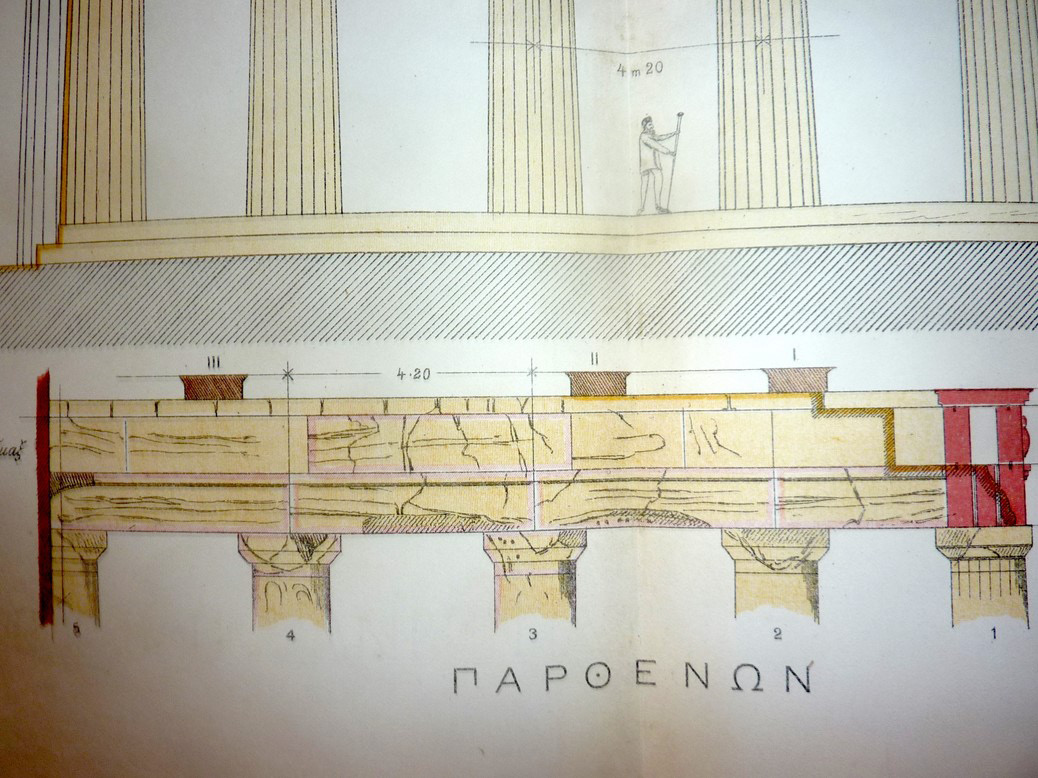
Figure 21.16. Part of an architectural drawing by Josef Durm, 1885. Hand-coloured lithograph.85
Carpenters experienced in calculating the weight distribution of mediaeval gothic buildings, who were hurriedly brought from France, erected emergency scaffolding that prevented a collapse—but it had been a near-run thing. If Elgin had ‘saved’ the ‘Marbles’ as was the British official rhetoric, the removals had come within a whisker of causing the collapse of the last substantial part of the Parthenon itself.86 Those who had ‘saved’ the Parthenon, it now emerged, were the ancient designers and builders who had caused it to be over-engineered.87
The practice of breaking off pieces may have reached a peak in the years immediately before the Revolution. Joseph Woods, an architect who was in Athens in 1818, as part of the continuing research and publication of The Antiquities of Athens by Stuart and Revett begun in the 1750s, noted that, even although there were many carved pieces of the Parthenon lying on the ground that they ‘might almost fit on it’, many visitors preferred to do their own mutilating, apparently so that they could claim the authenticity of having obtained the pieces with their own hands.88 In 1830, while the Acropolis was still in Ottoman hands and removing antiquities was strictly forbidden, Benjamin Disraeli, who was amongst the first to confirm that the monuments had not been substantially damaged during the Revolution, surreptitiously took away a piece of the Parthenon.89 And, after the Ottoman forces left, the piecemeal destruction resumed. In July 1833, when the protection duties were handed over to Bavarian troops, C.B. Young, a junior British naval officer, paid a visit under the guidance of Pittakis and Gropius. In writing home to his sister, he reported that the Bavarian soldiers had been breaking off pieces of the Parthenon. Until a few days before his visit, he wrote, the metope at the north-west corner, marble that had, astonishingly, survived since antiquity almost complete, despite having been carved in such high relief as to be almost sculpture in the round, had been vandalized by the soldiers. The knee of the left hind leg of the centaur that they had broken off did, however, make its way to Munich where, at the time of writing, it still remains.90
It was around the end of the Ottoman occupation that an American naval chaplain, the Rev. Enoch Wines, noted: ‘every one who visits the Acropolis knocks off a piece for a specimen. Some of our officers followed the general practice in this respect’.91 Wines also reported that one of the Ottoman soldiers was inquiring ‘if we had no such stones in America’.92 The soldier’s sardonic comment was preserved by Wiles as an example of oriental naivety, but the question was a good one.93 Despite all precautions, half a century after the Acropolis was first put under guard as a national monument, it was still normal, obligatory almost, for those foreigners who had the means and the opportunity, to carry off pieces of the marble, what one visiting artist called ‘the tasteless rapacity of dilettanti travellers, the mutilators of fingers and toes, of ears and noses’.94 In 1875, a man only identified as ‘an American’ was said to have ‘filled his pockets with fragments and broken off pieces with a hammer’ until the consul intervened.95 In 1881, the medical doctor, Sir Alexander Ogston, noted: ‘I did, like the true British tourist, pick up a marble of the [Parthenon] pavement at my feet to convey home as a souvenir of the unutterable’.96 If an American conduct book of 1865 is typical, young men from the United States who visited Greece as part of tours of ‘Bible lands’ were advised to carry a small hammer, and ‘clip off a piece of every building and monument you come to […] as a relic and memento of our visit’.97
In 1878 a Greek workman employed in the excavations sold to the Frenchman Joseph Reinach a piece of marble that pictured a woman’s hand holding a branch thought to be of myrtle or laurel, but perhaps of olive, described as from ‘some statue by a pupil of Pheidias’. Reinach bought it, he says, for fear that it would be bought by some Englishman with deeper pockets, reciprocating Elgin’s claim to be ‘saving’ the Marbles from the French, but it has since disappeared.98 Three other pieces are said to have been built into the Christian altar in the Cathedral of the Pines, a war memorial in New Hampshire in the United States, although how and when they made their way there is not reported.99 When, around 1906, Dmitry Merezhkovsky, one of the founders of the Russian symbolist school, and by some regarded as the successor to Tolstoy, visited the Acropolis for the first and only time, he said that he expected to feel a sense of indifference. However, in an updating of the ‘came to scoff, stayed to worship’ cliché, he described the effects of seeing the Parthenon: ‘my soul was filled with the joy of that great deliverance from Life, which Beauty alone can give’. At last, he wrote, he had found something ‘to make life worth living’.100 However, the great seer, unable to restrain his urge to possess, took away ‘two small fragments of the actual structure of the Parthenon’ that he placed on his desk in St Petersburg, where, as he wrote, he gazed at them like ‘a pilgrim gazing upon some holy relic brought back from a distant land’.101 But, without a worshipper, a holy relic is just another stone. Without someone to remember, a souvenir prompts no memories. Without someone to believe in its power, no fetish can work its magic. The pieces of the Parthenon taken by Merezhkovsky, like almost all those taken by others, are now lost.
Nineteenth-Century Excavations: Creating ‘the true Athens’
As for the excavations and the clearances, on 8 January 1889, The Times of London, then the newspaper of record for much of the world, printed a letter received from Athens. Signed by Charles Waldstein, later Sir Charles Walston, and sent on behalf of the Greek Government and of the foreign archaeological schools in Athens, the letter reported that on 31 December 1888 the archaeological researches on the Acropolis of Athens had been completed. The excavations, Waldstein reported, summarizing what had been done since 1834, had been ‘carried down to the primitive rock, thus exhausting the possibility of future finds on this site and obviating a future disturbance of the surface’.102 In accordance with the confidence of the age, the Acropolis that had been brought into being after half a century of clearance, anastelosis, excavation, and the removal to museums of the pieces of statues, inscriptions and other artefacts that had been found, was intended to be permanent.
With few exceptions, the result was welcomed by those who were regarded as opinion-setters in Greece and elsewhere. Georg Brandes, a writer from Denmark with a wide international reputation, probably spoke for the educated mainstream when he wrote: ‘my inmost spirit sings at last’. No longer, he said, would seekers after the essence of Hellenism have to overload their imaginations by looking at modern buildings in the classical style, such as the Madeleine in Paris. No longer need they feel frustrated at the attempts to transfer the cityscape of ancient Athens to modern cities such as Copenhagen or Edinburgh. No longer need they struggle to imagine classical Athens in the polluted, foggy, sooty, and damp air of the British Museum in London. Now, he wrote, we have ‘the true Athens, the only, eternal, true Athens!’103 The modern Acropolis had not only narrowed the gap between the present day and classical antiquity, but between what could be seen and what hitherto could only be imagined.
The most powerful effect, some visitors remarked, was when ‘the monuments present themselves as much alone as possible’.104 Looking back from a time when such viewing is almost impossible, we can see that they were commending, and reinforcing, a trope of nineteenth-century western romanticism, the solitary viewer struck with awe in the presence of a great work of art. On his visit in 1832, when the Acropolis was still in the control of the Ottoman army, the French romantic poet Alphonse de Lamartine spent hours reclining in the shade of the Propylaia, silently contemplating the Parthenon.105 Even as a ruin it was, he declared, turning to an ancient metaphor, ‘the most perfect poem written in stone on the face of the earth’.106 In 1869, when the clearance work was almost completed, the British historian Sir Charles Trevelyan, was struck by ‘the perfect authenticity of the ancient monuments’, italicizing the word favoured by western romanticism as the opposite of the artificiality that romanticism associated with insincerity.107
Although the emphasis of the nineteenth-century programmes was on the buildings, some of the photographs taken during the clearances preserved traces not only of the ancient topography but of the ancient cityscape and of the ways of seeing that it rhetorically encouraged. The photograph reproduced as Figure 21.17, taken around 1910 when the Acropolis vegetation had been scrubbed out, helps us to imagine how the main features of the ancient Acropolis appeared to those looking up from the town on the north side.
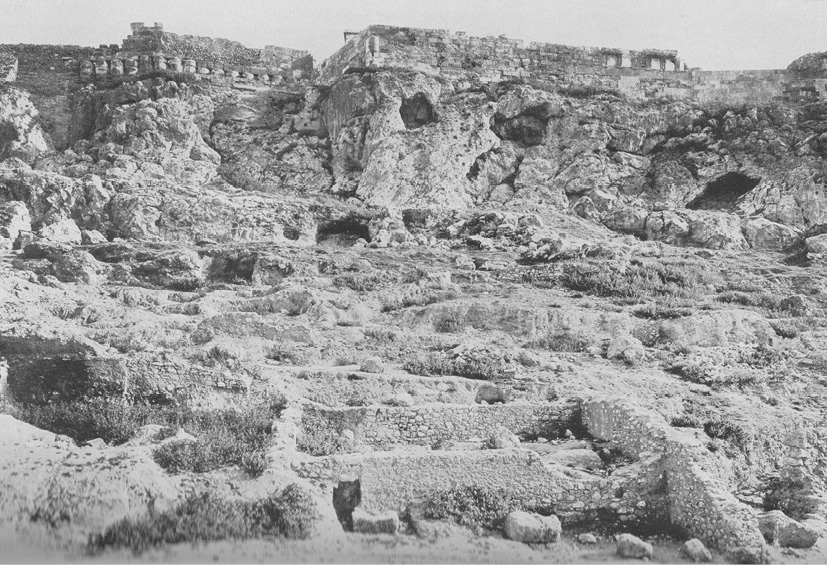
Figure 21.17. The ancient encircling path, ‘Peripatos’, on the north side of the Acropolis under the caves. Photograph c.1910.108
The image also brings out the visibility from the town of the caves, where, in classical times, the rites of what the Athenians knew were among the earliest cults, some involving pre-Olympian ‘chthonic’ earth deities, were still practised. It brings out how their self-fashioning narrative of origin and progress, which is found in many ancient authors over hundreds of years, was apparently validated by the evidence of the land itself.109
The road round the Acropolis slopes, part of which can be seen in the photograph, was not an informal track beaten through the vegetation by generations of trespassing feet. Cut into the rock, it was a designed and engineered feature of the Acropolis that, we can be confident, must have been officially approved and its financing agreed by the city’s authorities at some moment in the ancient past. Visually, as was noted by the professional orator Aelios Aristides in one of his panegyrics, the Peripatos that encircled the acropolis of a Hellenic city was like a jewelled necklace: it unified as well as adorned.110 The acropolis of Smyrna, a colony of Athens that followed many Athenian customs, was, according to Aristides, laid out like an embroidered gown, a reminder that the non-slave women of ancient Athens were included in the metaphors of the imagined community of the ancient city as they in gendered roles were celebrated in the real city.111
An inscription, thought to be of the 4th century BCE, carved on a fallen boulder at the north-east corner of the Acropolis, which notes the exact length, confirms the formal status of the Peripatos as part of the sanctuary.112 It is shown, as the road has recently been restored, in Figure 21.18.
That the inscription is carved in an irregular style on a rough boulder that has fallen from the Acropolis at some time in the remote past, rather than displayed in neatly-carved letters on an upright marble stele, as would have been normal on the summit, suggests that the Athenian civic authorities of the later classical period wished to preserve the wild, natural, ancient, (‘chthonic’) characteristics of this part of the Acropolis. Already, not long after the completion of the four highly regular classical buildings, we are led to think that those with responsibility for the Acropolis already had a concept of the ‘natural’ in its modern western sense as well as of built heritage, not only in deciding to preserve the slopes from any modern changes, but in presenting them as physical and visual reminders of a deep past, punctuated by unexpected events, from which the ancient city of the ancient Athenians had resiliently emerged and could be expected to emerge again.113
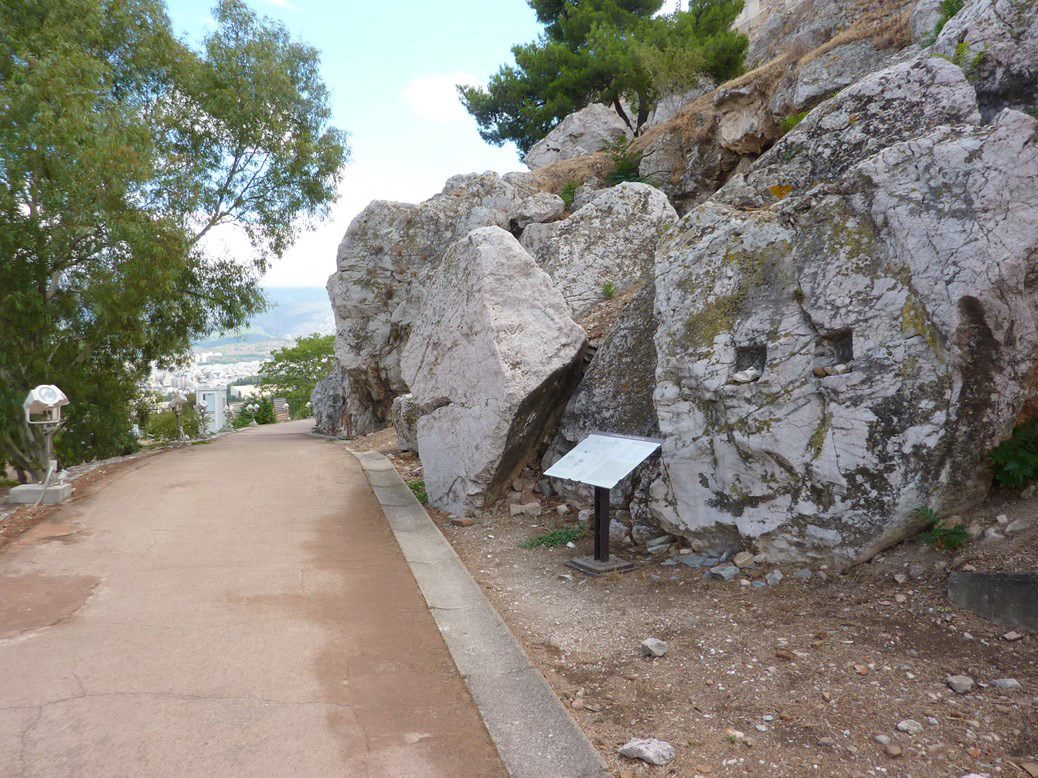
Figure 21.18. Ancient boundary inscription on the peripatos.114 Author’s photographs, 3 October 2013.
By ‘future finds’, Waldstein and the other signatories meant man-made objects, ‘things’, rather than ‘findings’ in the modern sense as an increase in knowledge and understanding. This derived from the explicit decision made by the Greek Government immediately after the Ottoman troops left to search for ‘masterpieces of ancient art’ and to prevent them from being sent abroad.115 The memory of Elgin, with its lesson of ‘never again’, was already fixed in the national neo-Hellenic memory. As one visitor wrote in 1834, it was only the external forms of the Parthenon sculptures that lay in the British Museum: their essence had been annihilated when they were removed from the building and from the outdoor environment, with its changing lights and shadows, for which they had been designed and, he might have added, where they had been used in the civic life of classical Athens and for hundreds of years later.116
As it happened, just as the excavations on the summit were nearing their end, one of the most spectacular discoveries ever made was announced to an astonished world.117 Buried near the wall on the north side, where the column drums of the pre-Parthenon had been inserted, which had been under construction before the Acropolis was sacked by the Persian army in 479/480, were numerous broken statues, both free-standing and displayed as parts of the buildings, which the Persian army had knocked down. The inscriptions found on some bases followed a convention that is also found on many images made in later periods. They begin with the name of the dedicator followed by the name of the deity to whom the image is dedicated, and some also included the name of the maker who manufactured the work as he had been commissioned to do, as last in the implied scale of importance.118 Some of the names were also recorded in the works of ancient authors, making it possible to identify styles, dates when they are likely to have first been displayed, and their ancient reputations.
One dedicated statue had been used to repair the wall.119 And fourteen had been buried, at a depth of 3 to 4.5 metres, in three strata separated by stones, each stratum containing ‘common stones, statues, heads, feet, inscriptions, potsherds, pieces of coal, and earth’, with the result, which we can take as intended, that the ground level of what was to be the classical Acropolis was raised and made more flat.120 The moment of discovery was caught in a contemporary photograph, taken and, to an extent staged, soon after the event, as shown as Figure 21.19.
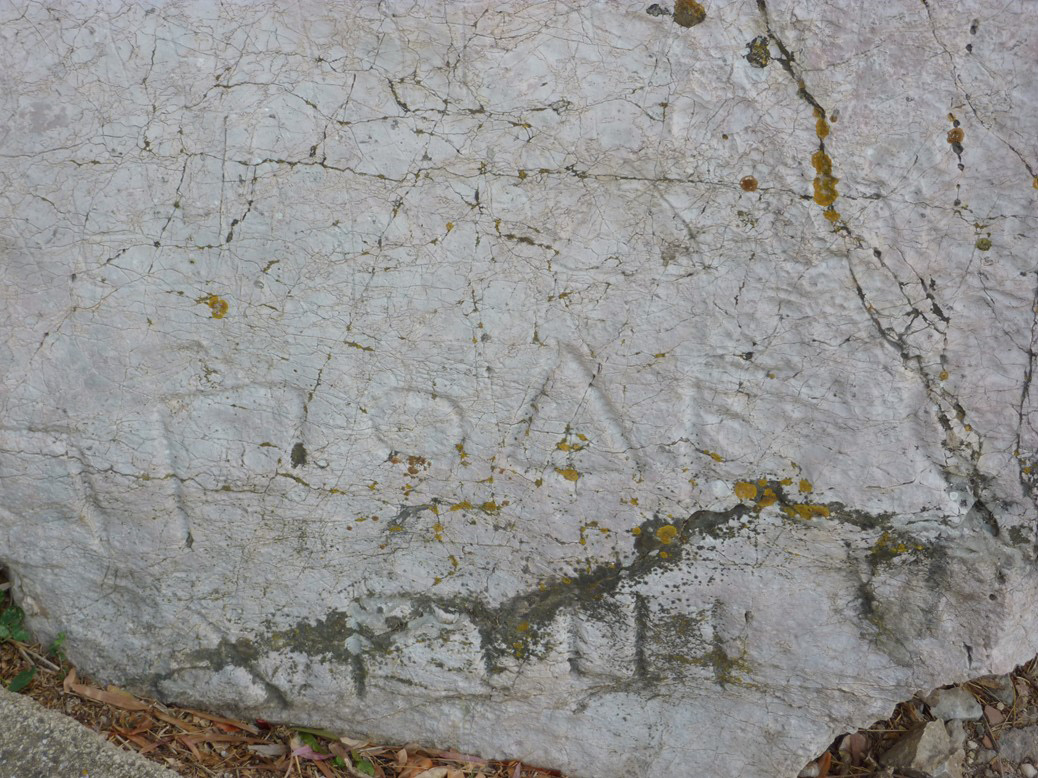
Figure 21.19. The place where on 5 and 6 April 1886, the fourteen dedicated ‘archaic’ statues were found. Photograph made soon afterwards by Rhomaides Brothers.121
A contemporary engraving copied from a photograph, even more staged, reproduced as Figure 21.20, purports to catch the moment when some of the pieces emerged from the earth.
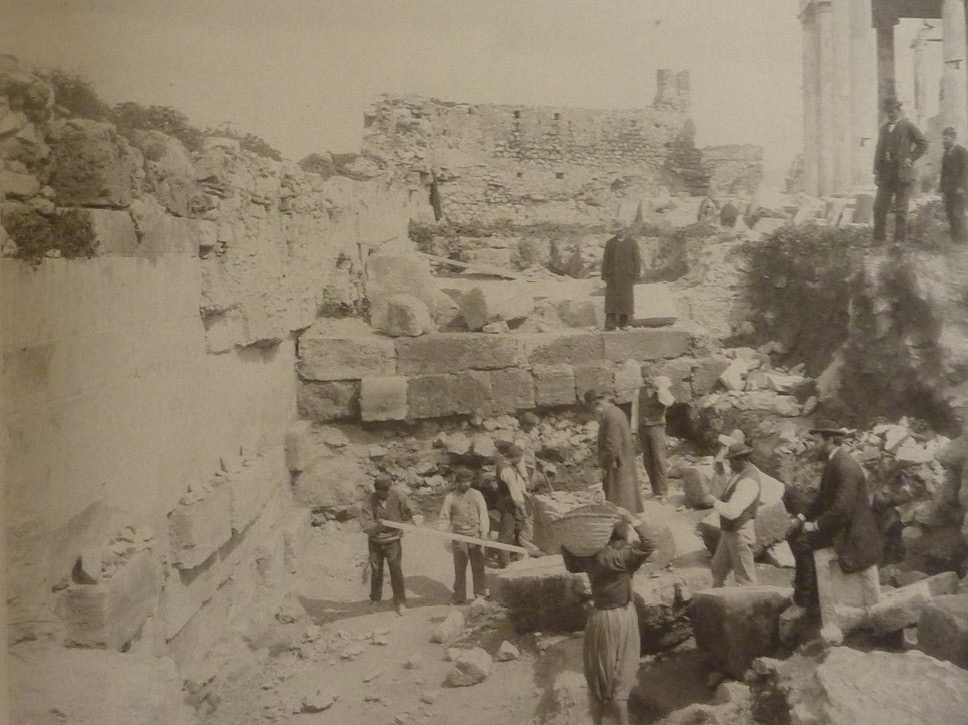
Figure 21.20. ‘The Marathonian Theseus.’ Dedicated statues destroyed by the Persian army in 480 BCE. Photograph c.1875.122
The image, evidently staged, offers a ‘eureka moment’, a misleading rhetoric characterising how scientific knowledge progresses. To others it may have recalled western pictures of dead Christians awakening from their graves on the Day of Judgment blinking in the sunlight, playing on the metaphors of regeneration that had been prevalent during, and before, the Greek Revolution. Several appeared to be smiling, although to some of those who had been brought up to admire the statues of the classical period as perfect, they seemed comical.123
Many showed evidence of having been deliberately broken with mallets and axes. There were also traces of the fire with which the Persian army had attempted to destroy everything combustible on the Acropolis that they left behind, providing further proof of the general reliability of the ancient historians. Although, as the first scholars to study them could see, the discovery could add greatly to an understanding of ancient myth, costume, and dedicatory practices, as well as the history of how the ancient Greeks had adapted models from other countries to the east and south, they were nevertheless classed as ‘works of art’.124 Some female figures are presented as wearing bracelets, one coloured blue, but only one in the form of a snake, as shown in Figure 21.21.
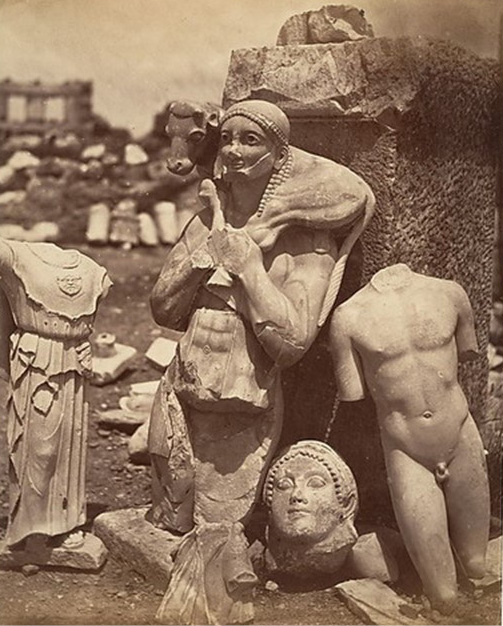
Figure 21.21. ‘Kore 670, with a snake bracelet.’ Acropolis Museum. Photograph made not long after the discovery.125
That snake bracelet was a marker of a special status that, we can be confident, ancient Athenian viewers were able to recognize. As the character of Hermes reminds the audience in the scene-setting Prologue to Euripides’s play, the Ion, recalling how the infant Ion was saved by the goddess Athena who assigned two serpents to guard him: ‘and that is why the Athenians have the custom of rearing their children adorned with serpents of beaten gold’.126 Later in the play, the character of Kreousa, in complaining that her privileged status is a burden, refers to ‘golden chains’ carried on her wrist, passed down in families that allegedly physically carried poison from the Gorgon’s snakes, and which were displayed by the families who claimed autochthony.127 In classical times, the cult statue of Athena Parthenos, which stood inside the Parthenon and was only seen on special occasions, was shown wearing a snake bracelet on both forearms.128 A fourth-century vase painting of the daughters of Kekrops shows both wearing elaborate two-and-a-half-twist snake bracelets picked out in white to signify gold.129 Since the snake bracelet identified certain women and girls, mythic as well as real or, in the case of the grave goods on which they are pictured, recently deceased members of the families of the autochthonous nobility, their presence on visual presentations, including those on the Parthenon, are relevant to understanding how they were interpreted by those who encountered them in ancient times.130
The excavation reports offer no evidence that the classical era authorities regarded the broken images as deserving of special treatment because they had been dedicated to deities.131 Since the clearing of the summit did not occur until a generation after the Persian occupation, they must have been lying around in their broken state for all to see.132 Although it would have been inexpensive to reassemble or repair many of them, by, for example, finding or replacing the bases from which they had been broken off, there is no indication that this was done except perhaps in a few special cases.133 Even when they had scarcely been damaged, as in the case of the young man carrying a sacrificial calf, they appear to have been cast aside.134 In the Athens of the post-480 BCE clear-up, as the city looked back in time to the era before the Persian wars, this mixture of reuse and casual disposal suggests that these pieces were regarded as broken stones, orphan memorials for whose repair or upkeep no public or private funding was available. For those dedications whose stone had not been inscribed with words or whose painted words had been washed away, the knowledge of who had offered them was already lost, and the commemorative rituals of families may have ceased to occur.
As for the decision-makers of the classical city, this selection of objects that would remind the classical age of the Acropolis from before the Persian war, and celebrate the resilience and continuity of the city, was not considered worthy of preservation. Lost to sight for over two thousand years, they have, however, enabled all generations since their rediscovery to imagine the pre-classical Acropolis in a more informed way than had previously ever been possible, even in high classical times, and to appreciate the stylistic changes made during the classical-era rebuilding.
Reports of the discoveries were quickly carried round the world, as in Figure 21.22, an image from a contemporary newspaper article.
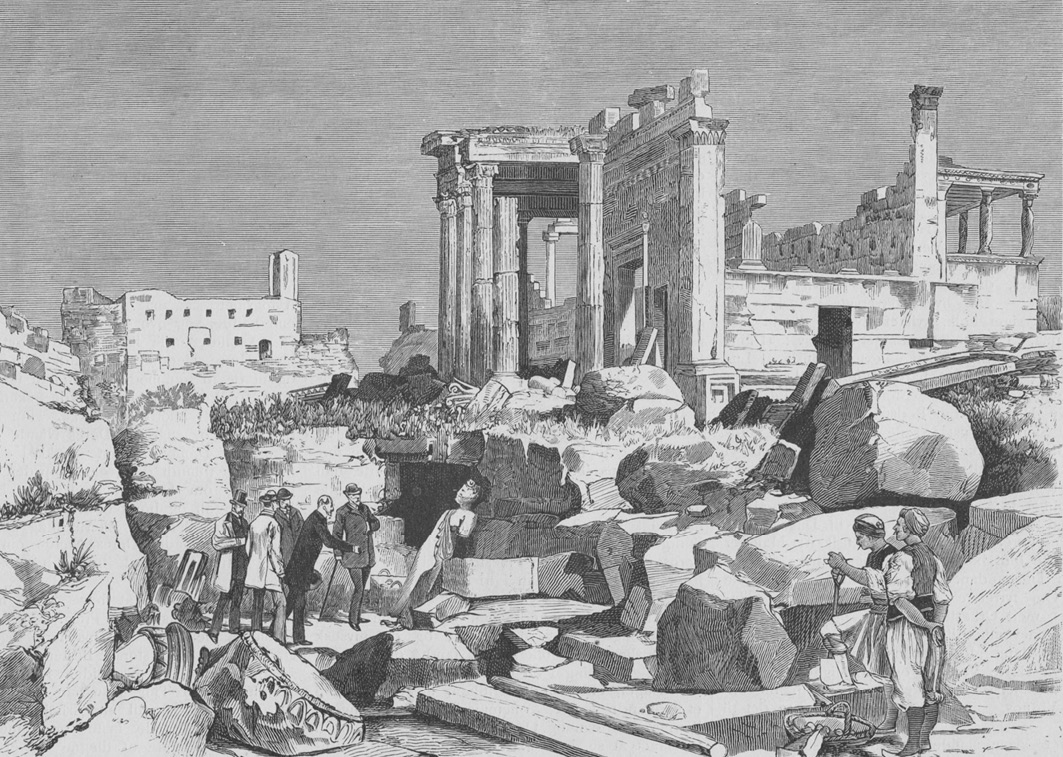
Figure 21.22. King George of the Hellenes inspects the archaic dedications as they are excavated on the Acropolis. Woodcut perhaps based on photographs, c.1882.135
The two-storey house seen in the background, then used as a temporary museum, had been the residence of the Ottoman commandant (disdar) of the Acropolis. It commanded a view over the town and the country to the north.136 The house was taken over by the insurgents during the Greek Revolution from 1822 to 1827, returned to an Ottoman disdar between 1827 and 1833, and used by the commander of the Bavarian army for two years before the Acropolis was demilitarised.
Given the military need for those occupying the Acropolis to be able to see threats from the north, it is a safe speculation that there was a lookout on this spot in ancient times, perhaps from the earliest days of settlement. The British architect Francis Penrose, unusual for his time in taking an interest in the uses to which the site was put, speculated that, since the surface of the bared rock at the east end was still rough and had never been artificially flattened or shaped as a foundation for permanent structures, it may have been on this part of the Acropolis, well back from the entrance, that the ancient town had been situated.137
During the five millennia when human beings had lived and worked on the Acropolis, they had brought in food, water, wood, marble, bricks, metal, and innumerable man-made objects, including pottery. They had planted crops and trees that had shed leaves, seeds, and nutrients. They had grazed, farmed, slaughtered, roasted, cooked, and eaten domesticated animals and fowls, and engaged in many civic and private activities, including large-scale ceremonial events that involved scattering food and wine as offerings to gods, and sometimes burial of the dead, all of which contributed to the gradual raising of the level of the soil.
During the nineteenth-century excavations it had become increasingly appreciated that the remains of the past are in layers, the deeper the older, and that with careful observation and recording, it would be possible to reconstruct a chronological sequence. It was increasingly understood that ancient inscriptions could be dated by the forms of lettering and what were regarded as works of art, including vases, might be dateable in accordance with their style. In this way the Acropolis had made its contribution to the what was regarded as the ‘professionalization’ of archaeology as a disciplined investigative practice. The excavators had, however, only latterly kept adequate records. No-one seems even to have made a map of the Acropolis town, although many antiquarians knew from experience elsewhere that street plans often follow previous patterns and may contain information about the distant past.138 The large map made by a French military engineer in 1826 during the Revolution but before the first clearances seems in some respects to have been intended to mislead.139
How deep the surface soil had been in ancient times on those areas of the Acropolis where it had been allowed to remain is not known, although it can be estimated, but those who dug were not much interested in the human life of the town. Large numbers of small artefacts, including pieces of broken ancient painted pottery, were found but not sorted.140 Many that soon afterwards would have helped to reconstruct a chronology were thrown away. Nor was there concern that stripping the surface down to the bare rock would deaden the ecosystem, some features of which, notably the flocking birds who shared the food offered to the gods and the storks to be seen around the buildings, had been a prominent part of the Acropolis viewing experience in ancient times.141 Missing from the experience too, now that the summit had been denatured, were the soaring birds taking advantage of the rising air currents, and the birdcatchers who preyed on them, sights that had sharpened the humour for ancient Athenian audiences of the Birds of Aristophanes.142
Nor, during the clearances, was any attention paid to types of evidence that modern archaeology has come to value as much as artifacts, such as human, animal and fish bones, sea shells, and plant seeds, evidence of diet and ecology. They could scarcely have guessed that a future generation would be able to extract DNA from bone fragments, from which kinship patterns, demographic data, and population movements could be recovered, a field of study whose future we can only imagine. They were not to know that the shells of snails who had inhabited the Acropolis since the earliest times might give reliable evidence of past climate change and of its effects. It was in response to a growing appreciation that every excavation destroys even as it discovers that Article 4 of the Athens Charter of 1931 declared that: ‘Excavated sites which are not subject to immediate restoration should be reburied for protection’.
The discovery of the archaic dedications changed the world’s understanding of ancient Hellas. Even when they were shown in monochrome photographs in an indoor room with poor light, as shown in Figure 21.23, no longer could it there be any doubt that they had been painted in bright colours.
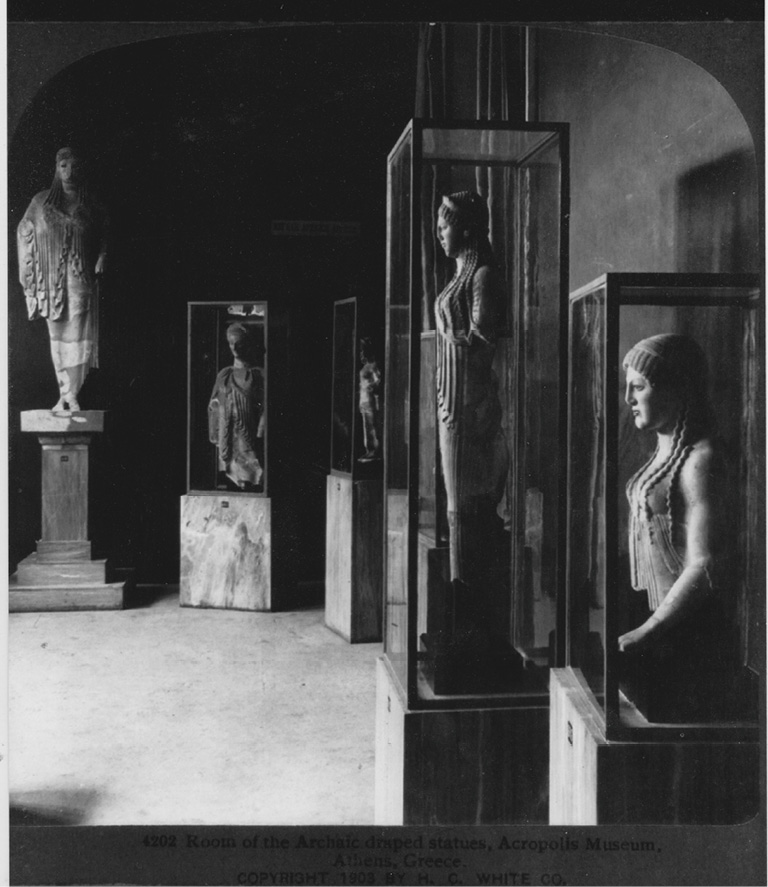
Figure 21.23. ‘Room of the Archaic Draped Statues, Acropolis Museum, Athens, Greece.’ Photograph.143
No longer could it be disputed that there were similarities with the portrayals of the monumentalized body made in other ancient cultures in the region, notably that of Pharaonic Egypt, even if the Greeks had quickly diverged and developed their own unique tradition. It was now beyond dispute that the tradition of western sculptural monumentalizing, with its white marble and vacant eyes, which had been derived from much later classical statues found in Italy, had been based on a misunderstanding of the practice of the ancient Greeks. Almost everything postulated by Winckelmann ought to have been abandoned as no longer consistent with the evidence, although it was not.
The modernist movement of the late nineteenth century had among its impulses a wish to resist the then dominance of the classical, with its hierarchies, its apparent irrelevance to modern life, and its tendency to exclude those who lacked a knowledge of Greek and were wanting in ‘taste’. The newly discovered archaic dedications also provided a rallying point for a constituency of viewers rebelling against what they regarded as the oppressive power of the classical, by which they meant an excessive, exclusionary, and eurocentric admiration for the classical period. To Michael Ventris, for example, who was among the first to show that one of the Minoan scripts, Linear B, was written in the Greek language, the classical was the ‘enemy’. As he wrote: ‘The columned building, antiquarian or monumental, insults its surroundings by its timeless irrelevance’.144 But perhaps, as others suggested, the archaic period of ancient Greece should be reimagined not as an apprenticeship stage in a progress towards the perfection of the classical, but as a springtime, an awakening, a spontaneity from which the overly refined, technically perfect classical was a decline, even a decadence. As more sites came to be excavated, and more archaic dedications were discovered elsewhere, it was increasing appreciated that classical archaeology could confidently expect a continuing supply of new data, and therefore of new knowledge and new insights. In its potential, classical archaeology seemed set to take the crown from classical philology, where for centuries the corpus of surviving texts appeared to be fixed, until by the end of the century, with the finding of papyrus texts in Egypt, that assumption too had to be revised. In 1891, for example, the publication of Aristotle’s Constitution of Athens, [‘Ath. Pol.’] a previously lost work recovered from a papyrus roll found in 1879 in a rubbish dump at Oxyrhynchus, transformed modern knowledge of classical Athens and the way in which it was governed. The recurrent fear, that, as the artist William Linton had written in 1842 at the start of the Acropolis clearances, ‘the secret is out’, and that, apart from details only of interest to specialist archaeologists (‘the little contentions about Pausanias and his giro’) there was nothing much left to discover, was again spectacularly invalidated.145
With Schliemann’s excavations at Troy and then at Mycenae and other sites, which occurred around the same time as the transformation of the Athenian acropolis, the modern world realized that ancient Hellas, and the world described in the Homeric poems, was far more ancient than had hitherto been thought. And, with the excavation shortly afterwards of the remains of the Minoan civilization in Crete, it could no longer be doubted that the modern world now knew more about the past than the historians of classical Athens, such as Thucydides, who had been fully aware that, even for their quite recent history, they had little reliable evidence.146
According to a visitor who witnessed the early excavations in 1840 soon after they started, ‘the accumulated mass on the surface [was] in some places from eight to ten feet in depth and rarely less than six.’ And what was found was ‘a mixture of soil, stones, bricks, fragments of earthenware, cement, and sculptured marble, among which are interspersed human bones, and shot and shells of enormous size’.147 It was at that time that the diggers uncovered an area at the north-east corner that, in ancient times, had been used as a workshop, an ‘ergasterion’, where much of the on-site work on the buildings had been completed.148 The workshops are mentioned in the building inscriptions of the Parthenon.149 And they appear to have been regularly inspected as part of procedures to ensure that contractors complied with the terms of their contracts and for accounting for the moneys and materials entrusted to their care.
The fullest contemporary description of what was found was given by William Mure who visited in the spring of 1838:
There have also been discovered, similarly buried, numerous large blocks of marble, wrought and unwrought, among which are some colossal drums of columns, originally intended for the peristyle of the new temple, but thrown aside from some defect in the material or execution. A large portion of the rubbish in which they are imbedded consists of marble chippings, the same doubtless that once strewed the workshops of Ictinus and Pheidias. From the midst of it have also been culled many of the minor class of relics, which, by their very homeliness, realize more effectually to the imagination the epoch from whence they have been preserved, and thus speak more directly and powerfully to the sympathies, than gigantic ruins or high-wrought works of finished art. Such are the fragments of the tools handled by the workmen, or even perhaps by the great masters themselves, to whom these precious models of the perfection of art are indebted for their existence; the lead pencils employed in sketching the design, the chisel and mallet in its execution; the wooden dovetails that connected the drums of the columns, and other contiguous blocks of the masonry of the Hecatompedon; pieces of charred wood still fresh from the flames of the Persian conflagration; besides small bronze images, and other co-eval fragments of the inferior departments of art.150
The discovery of the ancient tools might have provided the perfect moment to begin to understand how the Parthenon had been made, the ‘angeiography’ that Spon had advocated as one of his suggested new sciences.151 It would also have allowed the modern world to appreciate more fully the metaphors from the building industry and its instruments that pervade the writings of classical Athens, including the most influential philosophical works of Plato.152 As discussed above, the discoveries on the site in the nineteenth century had shown that the ancient commissioners, designers, and builders of the Parthenon had understood the neuroscience of cognition more fully than the most modern architects of the time, by including many refinements that deceived the eye of the human viewer into believing that the building was regular and orthogonal.153 They also revealed that, as civil engineers, those responsible for the construction of the Parthenon had solved another of the local problems of the site, the fact that the Acropolis stood on a geological fault line and over the centuries had experienced many earthquakes. The workshop (‘ergasterion) where work on the Parthenon was carried out, if it was like others in Greece for which there is more information, was a substantial structure of brick and stone with doors in constant use.154 The workshop used by Pheidias and his teams when the chryselephantine cult state was being manufactured at Elis for Olympia, was still standing in the time of Pausanias.155 It seems likely that, in order to reduce theft, as well as to protect the workers and make it possible for them, and for their supervisory foremen, to see in detail what they were doing, sheltered from the fierce sun, such buildings were roofed. If so, the workers would have been exposed to the risks of diseases of the lungs such as silicosis, an illness of the lungs that comes from breathing in stone dust, which would have been especially dangerous for those who filed the surfaces of marble to the extremely detailed specifications demanded. If the industrial illness was explicitly recognized, as could have happened at a time when the massive building programmes were taking place all over of classical Greece, with workers moving from site to site, there is nothing in the record unless in the remark attributed to Hippocrates: ‘Phthisis most commonly occurs between the ages of eighteen and thirty-five years’.156
The implicit hierarchy in Mure’s comment determined what happened. Any objects classified as ‘art’ were picked out, preserved, and catalogued.157 Other objects consisted, according to visitors who saw them, of workers’ tools, including chisels, mallets, a lead plumb line, a lead pencil, an ancient vase in which the remains of red paint were still to be seen.158 The ‘instruments of the workers of Pheidias’ were still being shown to privileged visitors in 1860.159 If, as seems likely, these objects were put in store, they cannot now be found.160 Some of the objects that privileged tourists were allowed to take away and that are now lost, would, if they were indeed what was thought at the time, be uniquely valuable evidence of how ancient workmen were equipped for their tasks.161
Scholarly work to recover the techniques by which ancient builders achieved their effects has relied on the tool marks left on the monuments without seeing the tools themselves.162 This loss stands in the way of developing an understanding of how and why the classical Athenians, including Euripides and Plato turned to the tools used in the building industry as ways of helping to explain complex ideas.163
Among the other losses was a piece of pinkish ivory, said to have been found in the floor of the Parthenon at some time before the end of 1840. It was thought to be the thumb of the cult statue of Athena made by Pheidias that had stood inside the east chamber of the building and was only visible on occasions, such as festivals, when the gates were opened. The piece was presented to Alexandre Buchon when he was in Athens between December 1840 and April 1841 and apparently taken to France.164 The British architect William Burges included a sketch in his multi-volume commonplace book of architectural details, now in the possession of the Royal Institute of British Architects, of which a copy is shown as Figure 21.24.
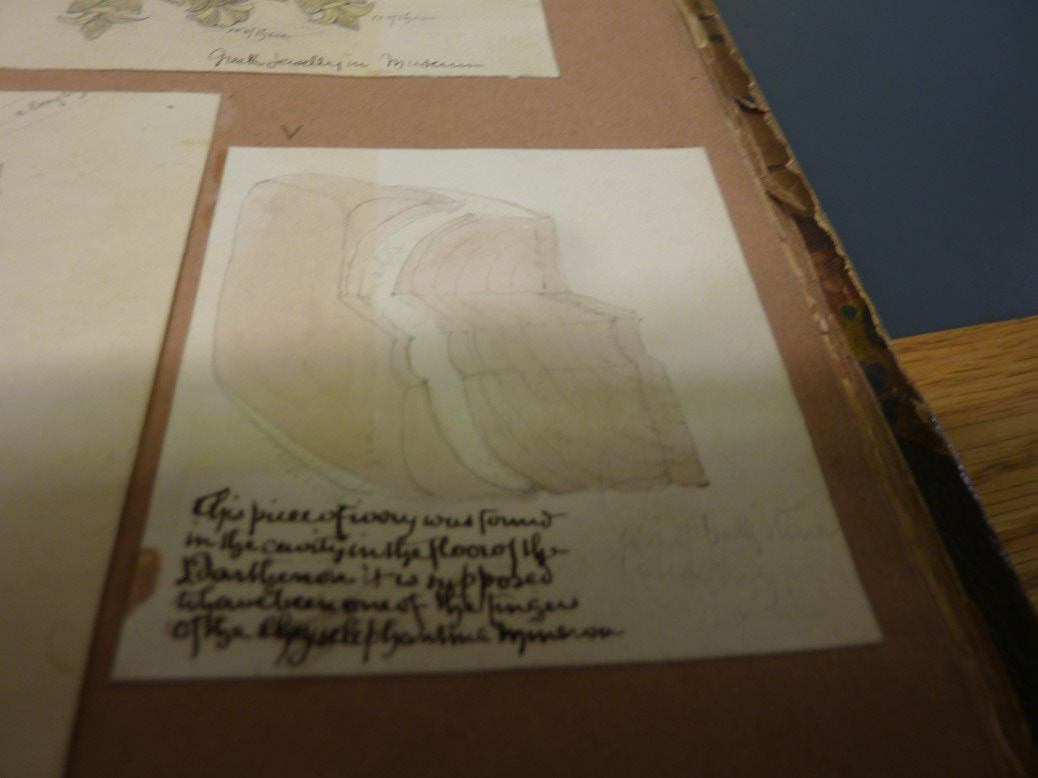
Figure 21.24. ‘This piece of ivory was found in the cavity in the floor of the Parthenon, it is supposed to have been one of the fingers of the Chryselephantine Minerva.’165
Whether the piece really came from the chryselephantine statue made by Pheidias or from some later object, cannot, of course, be ascertained, although the fact that Athena’s big finger is mentioned in the Knights of Aristophanes, may have caused it to be broken off.166 It has been plausibly suggested that the audience of the play were offered a joke about (divine) female masturbation!167
Archaeological excavations elsewhere in Athens many years later brought to light a workshop used by marble workers, with tools, unfinished works, and puzzling lead strips that were put into storage and forgotten. Recently re-excavated from the storerooms as part of the welcome swing away from the romantic discourses of creativity, it emerged that they were formerly thought from their shape to have been used as ‘pencils’ to make preliminary sketches on stone, although lead is too soft to be used for that purpose. Recent studies suggest that the lead had many uses, including the making of repairs to broken stonework.168
Nor was the disdain for objects that were not ‘art’ confined to the excavations in Athens. In the twentieth century, Sir Flinders Petrie, an Egyptologist, transformed the whole practice and knowledge-creating potential of archaeology by treating excavated objects as documents. What, to some, were still just debris to be thrown away, such as pieces of broken earthenware, could, he realized, when collected systematically, yield information about chronology and place of manufacture. The Greek iron tools of c.600 BCE found by Petrie at the Greek city of Naucratis in Egypt were sent to the British Museum. But, ‘on my enquiring to see them some years later,’ Petrie wrote, I was told that Mr Newton said they were ugly things and he did not want them so they were thrown away.’169 Newton was the British Museum manager who earlier in his career had been responsible for bringing Hellenic antiquities, notably the sculptures from the Mausoleum at Halicarnassos, from Ottoman territories, with the help of imperial firmans obtained by Stratford Canning.170
Besides the commandant’s house that was used to preserve and display many of the artefacts found in the Ergasterion, the large chamber of the Propylaia, which in ancient times had been the Pinacotheke or the picture gallery, was again put to use as an exhibition space. We are given a glimpse of how it appeared in 1859 in Figure 21.25.
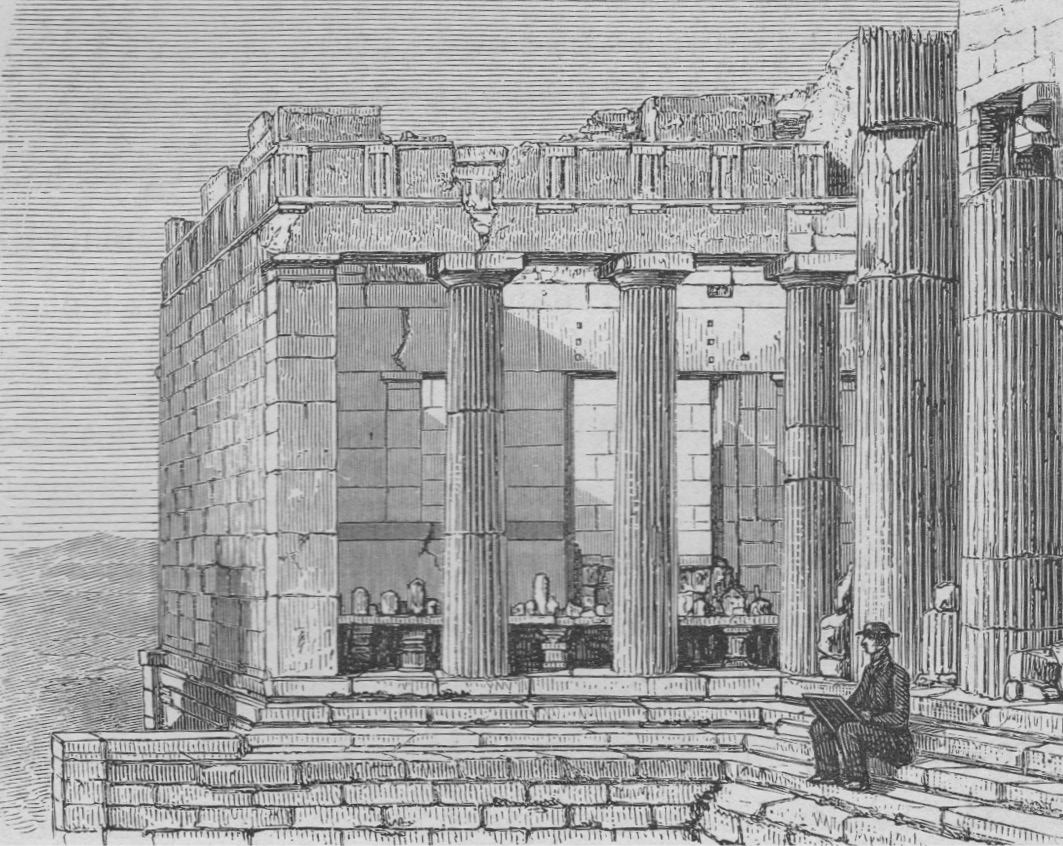
Figure 21.25. The Pinacotheke in 1859. Wood engraving of a drawing by Ernest Breton.171
The gallery, which contained, as one visitor noted, ‘all the broken heads, fractured legs, mutilated arms ranged upon benches’, followed the conventions of the galleries of antiquities that European noblemen and high-ranking ecclesiastics had installed in their palaces and houses.172 Unlike many of the objects in those galleries, they were however left in their fragmentary state, as had recently become the custom in the west. Ernest Breton, the artist, has included himself, or a typical solitary artist/viewer in western dress, in the picture, implicitly commending the practice of seeing through sketching.
But the gallery was soon full, as were the mosque that was pulled down in the late 1830s as part of the re-Hellenizing of the site and the commandant’s house that was permitted to survive until late in the century.173 At times the caves on the slopes were pressed into service as store-houses. Some antiquities were cemented to walls to prevent them from being stolen and others were piled in the open air. Figure 21.26, for example, shows sculptural fragments from the Nike Temple that were not included in the anastelosis.
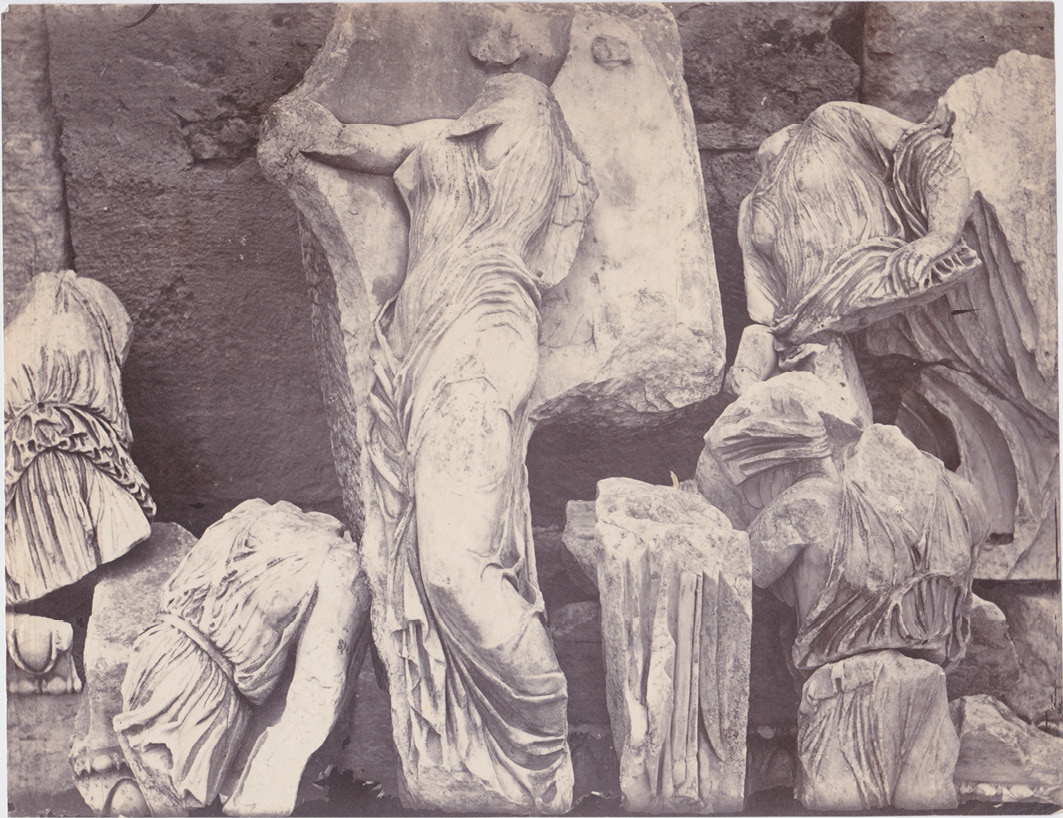
Figure 21.26. Pieces from the Nike Temple. Photograph made in 1869 by William Stillman.174
These sculptured images, unlike those broken by the Persians in 480, seem to show signs of having been deliberately decapitated or mutilated.175
The building that had required most digging out from the adaptations of the long past was the Propylaia, which was enveloped in a mass of masonry. And, as Charles-Ernest Beulé, who undertook the work with funds from France, reported, the violence of his archaeology was like war, or rather, like siege warfare. When the blocks, bonded by centuries of pressure as tightly as if they were still in a quarry, proved impossible to shift manually with iron crowbars, he dislodged the masonry with 500 ‘doses’ of explosives obtained from a French warship.176 His methods brought protests from the Greek Government, and curator Pittakis had a lucky escape when a flying fragment made a hole in his hat. If this was conservation, what was destruction?
But Beulé was able to convince his hosts that he was no Elgin, and that he was merely removing the remains of barbarous ages. An indication of the sheer amount of material that was removed from near the Acropolis entrance is given in a lithograph that was published in 1854 to illustrate Beulé’s discovery of the ancient, but post-classical, entrance gate.
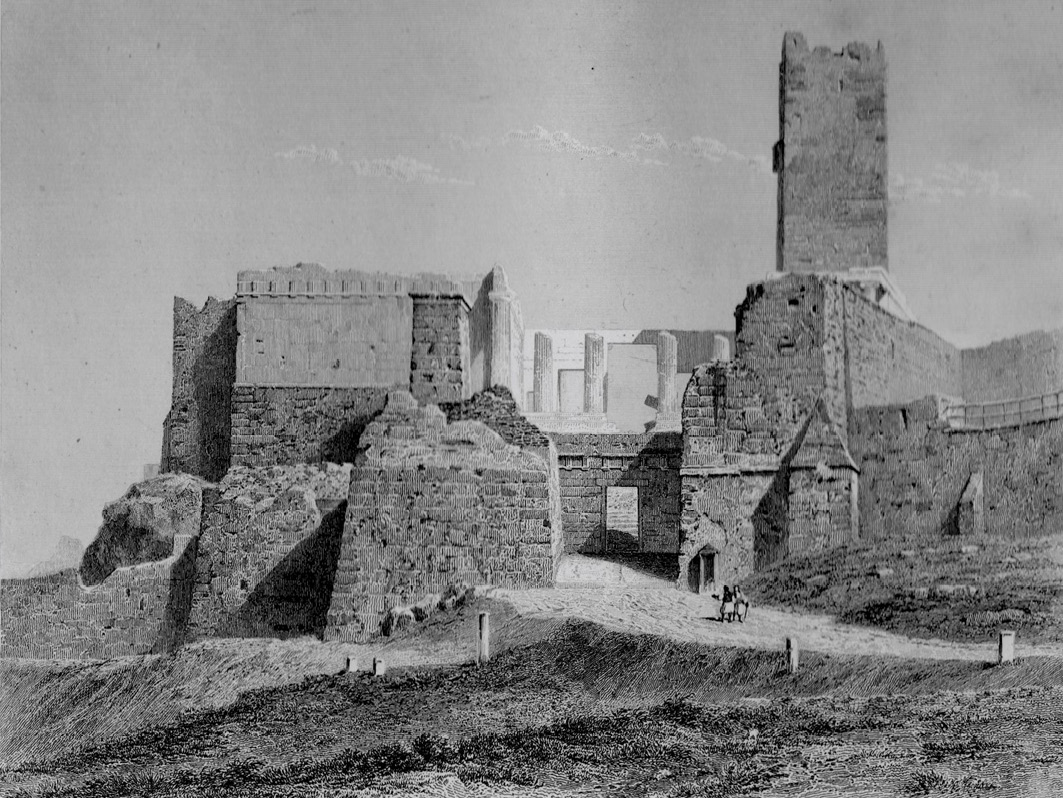
Figure 21.27. The entrance to the Acropolis before 1853, showing the Beulé gate. Lithograph.177
The Frankish Tower: An Inconvenient History
The last building to be removed from the Acropolis summit was the huge ‘Frankish’, or, as it was then often miscalled, ‘Venetian’ Tower, which had been part of the look-out, the defences, and the living quarters of the Acropolis residents for hundreds of years. Figure 21.28, a detail from a larger photograph, shows how it had been integrated into the Propylaia.
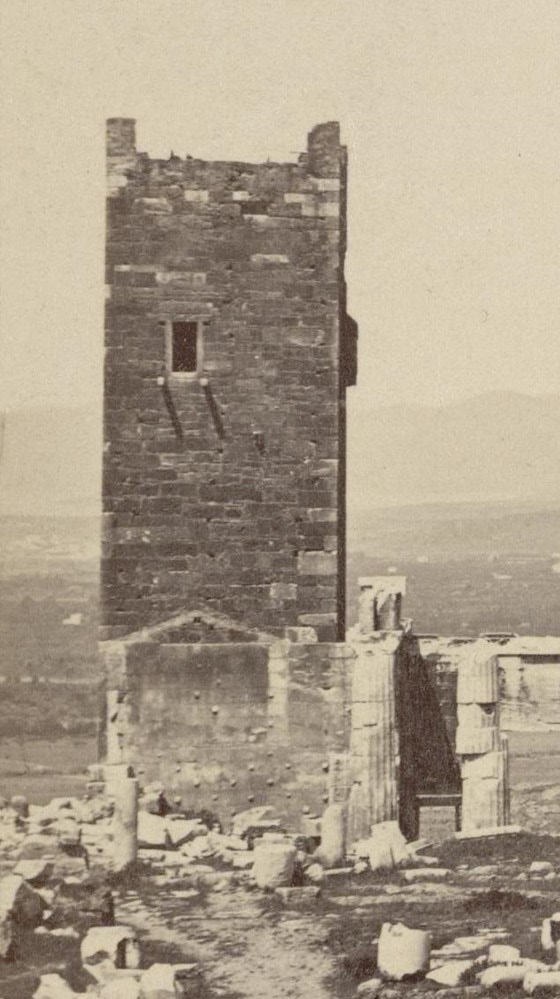
Figure 21.28. The Frankish Tower in 1872. Detail from a photograph by William Stillman. Wikimedia.178
From the top of the tower it was possible at night to signal by lantern to most parts of the town of Athens, as was done in 1825 during the Revolution, and it was then heightened.179 By the middle of the century it was sometimes called Odysseus’s tower, after the warlord who had been held prisoner there and was assassinated. Although of all the fighters in the conflict Odysseus Androutsos, a local warlord, was amongst the least national and philhellenic, he too had been later heroized as a new Leonidas.180 The tower had played its part in the history of the Greek Revolution.
However, as the archaeologists looked up, their eyes fastened on the pieces of white marble that peeped out from some layers. Were they ancient inscriptions? What ancient words might be hidden there waiting to be disinterred and read for the benefit of knowledge? Pittakis, an avid epigraphist, was amongst those had long advocated the dismantling of the Tower. And there were arguments related to the viewing experience and the Hellenic continuity narrative. This ‘barbarous sentinel’, as one visitor called it, not only had nothing in common with the rest of the newly cleansed scene, but it dwarfed the Parthenon, so that visitors who wanted to experience ‘authenticity’, had to stand with the Tower at their backs.181 Like the scaffolds of the anastelosis programmes, the Tower intruded an alien element into the dreamscape of classical Hellas that visitors hoped to experience.
J.D. Mahaffy, a prolific author and professor of Greek literature in Dublin, was ridiculed for suggesting that the Tower might have been put up during the few months of 1687/88 when Morosini’s army was in occupation. Nor had Mahaffy looked at the engravings relating to Morosini’s invasion that had already been collected and reprinted, which showed that the Tower already existed at the time of that invasion.182 How could it be, some wondered, that a professor who claimed to study the past through its material remains was so ignorant of the enormous scale of resources of men and materials that would have been needed to build such a huge tower in a few weeks in an age reliant on human and animal power? Whichever government it was who had incurred the cost of building the Tower evidently intended that their occupation of the Acropolis would be permanent and that the Tower would display and perform that intention.
By making comparisons with similar towers elsewhere, the date of construction was narrowed to a broad range either side of 1400, when the Acropolis was under the control of a succession of western princes who had taken it over in 1205 as part of the spoils of the Fourth Crusade. To some Frenchmen it had therefore became a source of pride, a monument to the glorious Frankish Crusaders who had once built a ‘New France’ in Greece, and contributing a piece to the nineteenth-century cultural construction of the imagined French nation that was occurring simultaneously with the imaginative construction of Hellas.183 The Frankish Tower had been used as living quarters, and in times of crisis it had given lookouts on the Acropolis more height, and leaders a little more time to decide whether to stay or leave, to fight or to flee.184 However, in the new nation’s official eyes, the Tower was also a relic of foreign occupation, as alien to the image that modern Hellas wanted to project to itself and others as the eighteenth-century mosque standing in the middle of the ruined Parthenon.
But was the fact that the Tower was not Hellenic a sufficient reason for it to be dismantled?185 Was everything built on the Acropolis between ancient and modern Hellas to be regarded as a temporary intrusion? Among those who contributed to the debate in the local Athenian press was L. Kaphtantzoglou, who described the Tower as Turkish, and compared it to the droppings of birds of prey.186 It was a neat metaphor for the monument cleansing that he and many others advocated, with perhaps a memory of the days of the storks and their filthy nests.187 Were the advocates of removal, the ‘purists’, even being true to classical Athens? As one opponent reminded his opponents, the Athenians of the classical era had themselves used the Acropolis to display the claimed continuity of their history, as ‘an index of their own progress’, as the column drums of the old Parthenon set in the walls attested.188 The Tower had also become part of the iconized Acropolis, recognizable in images of Athens invented and circulated round the world, as in the example in Figure 21.29.189
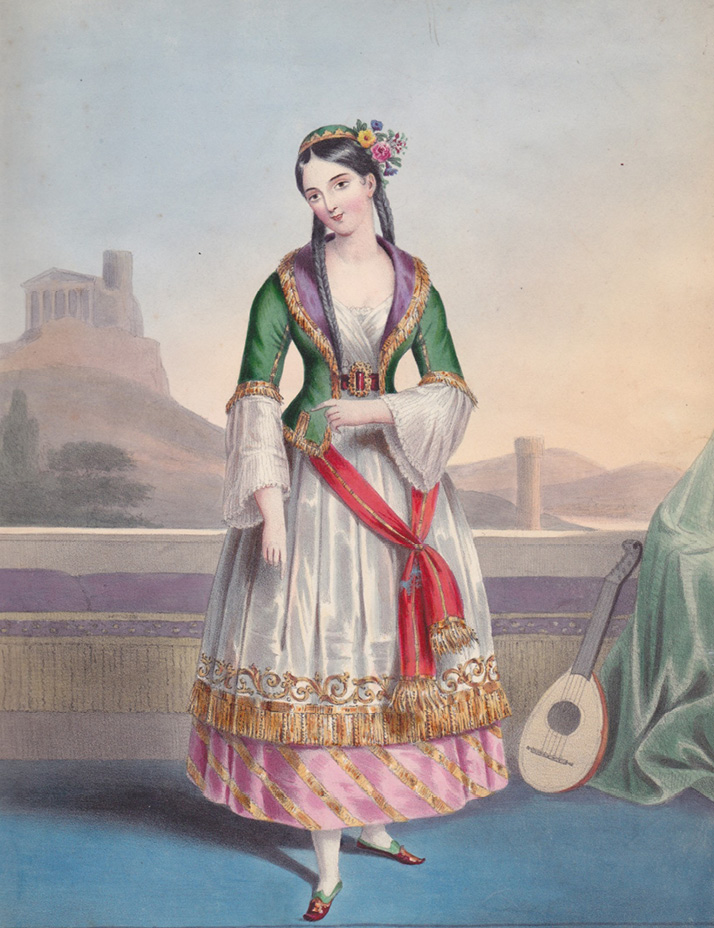
Figure 21.29. ‘A lady of Athens’ with the Acropolis and Frankish Tower in the background. Coloured lithograph, unidentified, English, c.1860.190
When Heinrich Schliemann offered to provide most of the funds, and in 1874 it was decided that the Tower must fall, the arguments did not stop. To Edward Freeman, professor of modern history at Oxford University, the Greek authorities, and their supporters, such as Mahaffy, who claimed to be conserving and restoring, were in fact adding their names to in a long roll-call of barbarians and destroyers that included Sulla the Roman, Attila the Hun, Morosini the late Crusader, and Elgin the antiquities collector. Comparing the Acropolis of Athens with that of Mycenae, Freeman remarked that: ‘in the life of cities nothing preserves like early overthrow, nothing destroys like continuous life’.191
Schliemann, ever the businessman, had secured the right to be the first to publish any inscriptions found, an assertion of intellectual property that was still permitted although it is unlikely that he would have been allowed to export the actual marble.192 Freeman, momentarily forgetting his professional claim to be an observer of all pasts, admitted to being delighted when no inscriptions were found: ‘By a righteous Nemesis, when the destroyers had finished their work of havoc, they found nothing to reward them.’193 Mahaffy, in a display of sour grapes and huffy stereotyping, declared that if no inscriptions were found, it must have been because the Greek workmen had stolen them.194
All sides regarded the Tower primarily as an intrusive piece of superseded military architecture. Few appreciated that it was a standard component of a crusader castle of the pre-and early gunpowder era, with a series of concentric defensive rings, bastions, a fortified residence and a domed hall.195 But if any consideration was ever given to conserving it, since the Propylaia had already been re-Hellenized it was already too late. The only alternative to removing the Tower was to preserve a western mediaeval-era building as an island in the bare neo-Hellenic landscape then under construction, joining the Parthenon, the Erechtheion, the Propylaia, and the Athena Nike as a decontextualized building that needed much historical imagination on the part of the viewer if its ancient role was to be understood.
In the debates about the Frankish Tower we hear the pre-history of the Venice Charter, with its emphasis on preserving buildings as far as possible in the state they have come down to us.196 But we are also given a seat at a debate about the legitimate uses of the past. Could it be that, just as most generations feel some responsibility for the future, the past too might have claims to be remembered for how it had actually been, and not cherry-picked for new rhetorics to serve new purposes? Was the nineteenth century, for all its talk of the ‘science’ of antiquity, turning the Enlightenment aspiration to respect historical truth into the invention of a fictitious heritage?197
Meanwhile on the slopes, the Odeon of Herodes Attikos was restored as a working theatre. The larger Theatre of Dionysus, when excavated, caused disappointment when it turned out not to have been built in the classical era but some centuries later. It now seemed more likely that the plays of Aeschylus, Sophocles and Euripides had in their own day been performed to smaller audiences using temporary wooden structures.
The ancient stadium, from where the Acropolis was in full view, was rebuilt in time to host the first modern Olympic Games of 1896, not quite as an anastelosis in the modern sense, but using some ancient materials. Greece, having been oriental, was now accepted as a small European nation, participating with the others just as small cities had sent athletes to compete alongside those from larger cities in ancient times. Indeed, it seemed especially fitting that it was a Greek athlete who won the Marathon race at those Games. A glimpse of that pre-First-World-War world, before the changes introduced at the 1936 Berlin Games turned them more obviously into a competition between nations and races, can be obtained from a faded newspaper as shown in Figure 21.30.
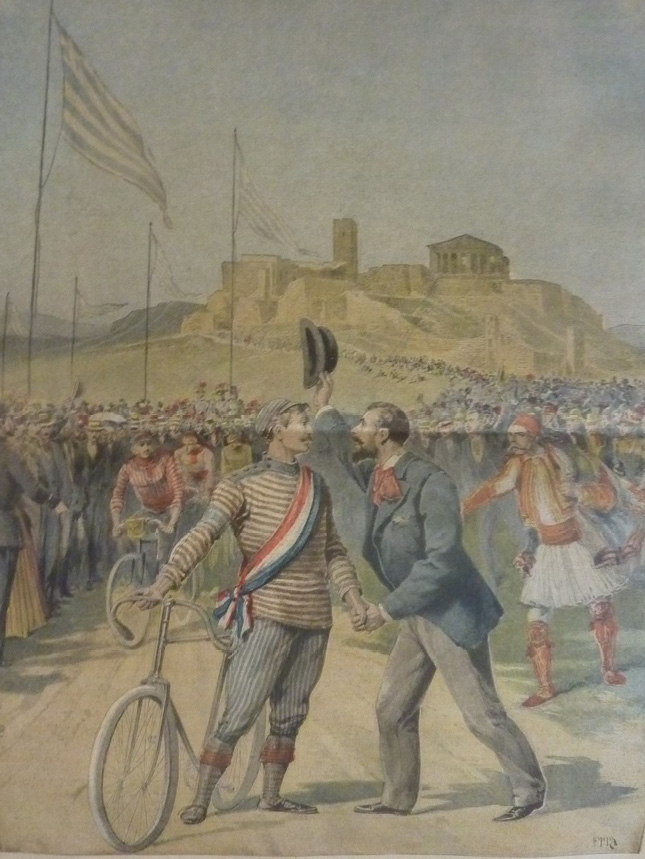
Figure 21.30. The first modern Olympic Games, Athens 1896. Coloured lithograph of the French winner of the cycling race in front of the Acropolis.198
At the same time, the American artist Corwin Knapp Linson, who was unusual for his time in seeing and recording living people, not just the monuments of Athens, left us a glimpse of the building work in progress at Figure 21.31.
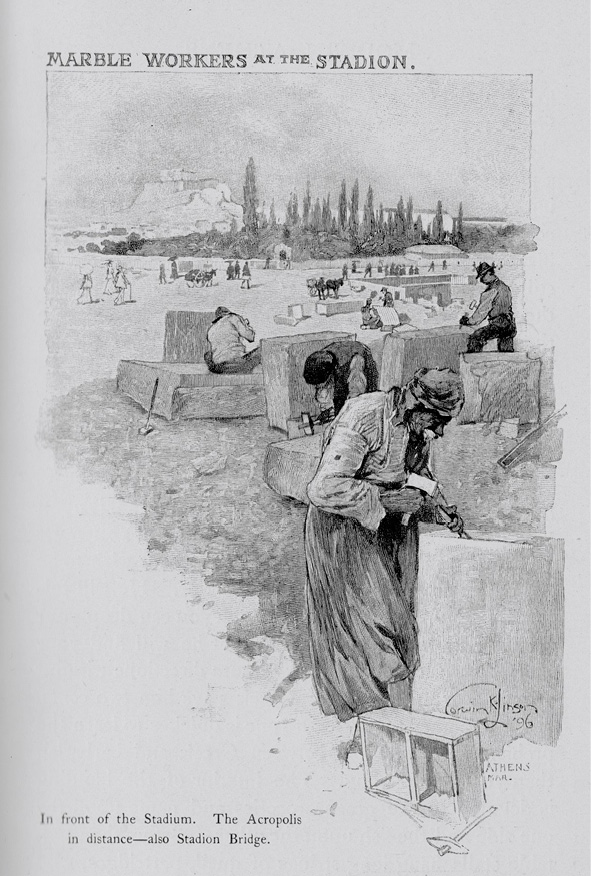
Figure 21.31. ‘In front of the Stadion. The Acropolis in distance — also Station Bridge’. Lithograph of a drawing by Corwin Knapp Linson, 1896.199
Throughout the excavations, remodelling and rebuilding of the site that took place towards the end of the nineteenth century, little care was given to the visual effects of the dumping of the excavated earth from the summit. A number of photographs take in the 1880s and earlier, reproduced in Figures 21.32, 21.33, and 21.34 record the streams of debris that were poured down all sides of the Acropolis.
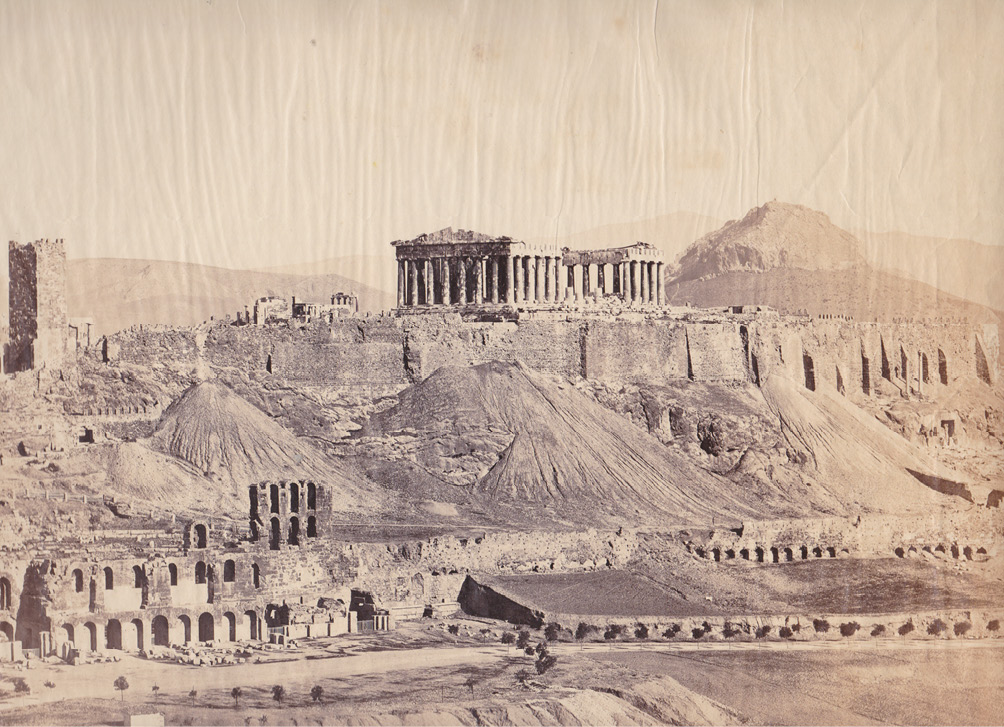
Figure 21.32. The excavated earth poured over the slopes on the south side. Photograph c.1870 by Félix Bonfils.200
Bonfils, in picturing Hadrian’s Gate, also recorded the heaps on the east slopes as can be seen in Figure 21.33.
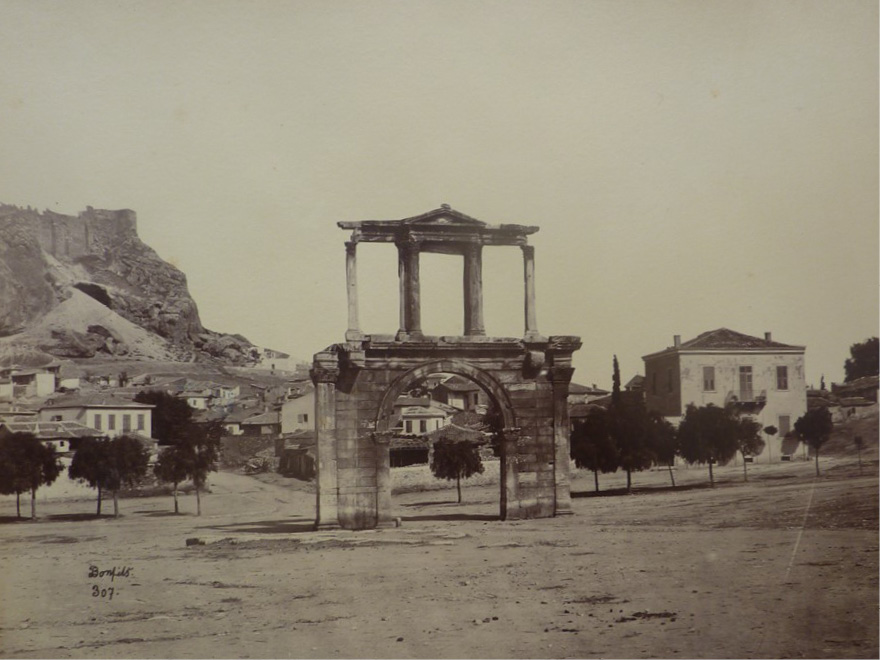
Figure 21.33. Hadrian’s Gate, c.1870, showing the debris on the east slope. Photograph by Bonfils.201
And, in an image taken from an unusual viewing station, on the north side, shown as Figure 21.34.
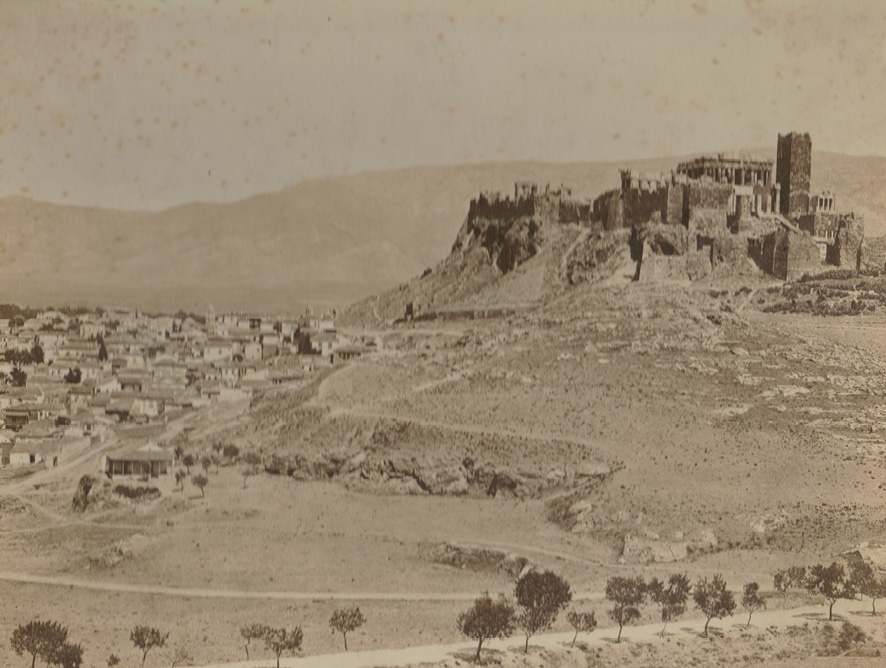
Figure 21.34. The Acropolis from the north-west. Unidentified photograph, made before the removal of the Frankish Tower.202
Figure 21.35 shows how the entrance looked after the Tower was taken down.
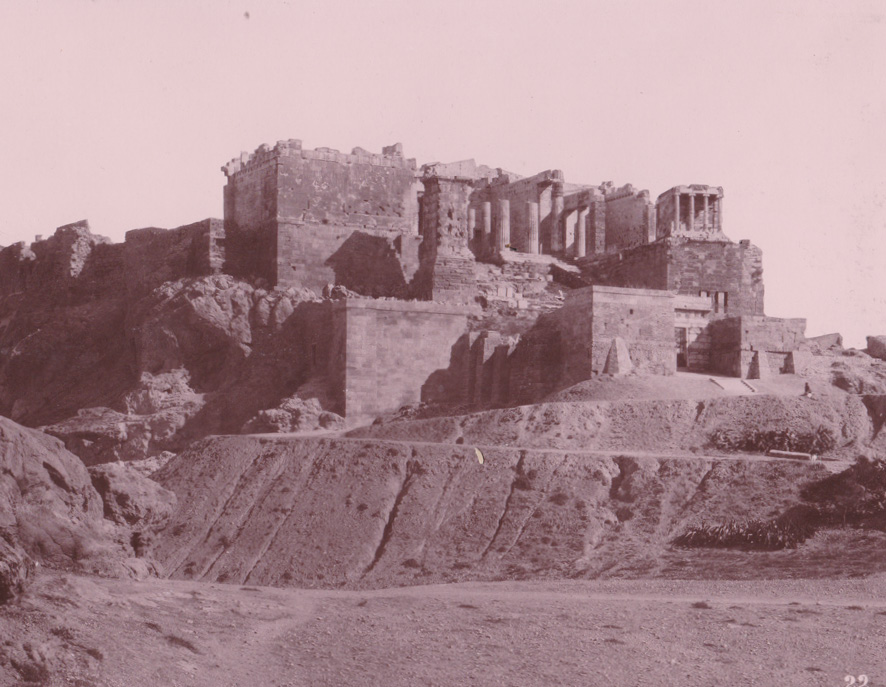
Figure 21.35. The Acropolis entrance with the heaped earth. Collotype of a photograph by Rhomiades c.1889, after the removal of the Frankish Tower.203
The unusual colour was adopted by several photographers in the late nineteenth century, possibly as an attempt to reproduce something of the violet natural colours of the micro-climate of the Athens basin, which had been celebrated in ancient as in modern times and was, for the first time, being reproduced in colour for readers and viewers elsewhere.204
Towards the end of the century the earth from the Acropolis summit that had been thrown over the south side and the debris from the digging out of the ancient theatre were collected into a neat artificial hill, as can be seen in the photograph reproduced as Figure 21.36.
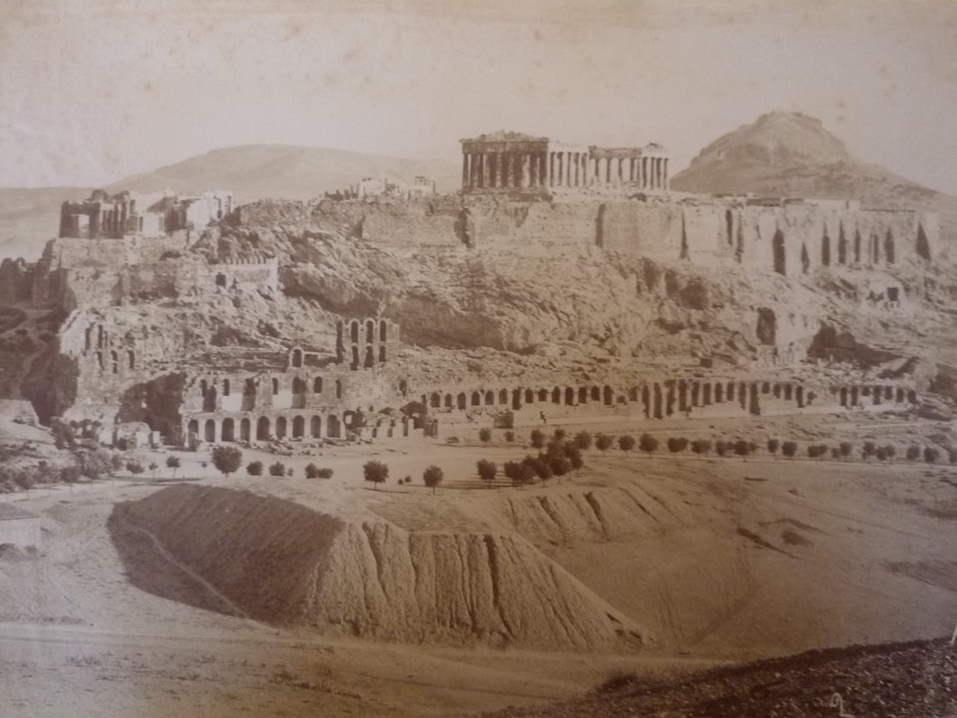
Figure 21.36. The artificial hill. Photograph thought to be by Constantides, c.1900.205
Not long afterwards, the artificial hill was landscaped over with trees, and today a modern hotel stands on the site. It was estimated at the time that 120,000 cubic metres had been removed from the summit and dispersed.206 In the future it may be possible to re-excavate at least some of the hill, with eyes open for what the previous excavators did not, and could not see, possibly using non-invasive technologies. Meanwhile the fraying photograph can stand as a glimpse of a future not chosen.
The leaders of the present conservation programme, notably Manolis Korres, have suggested putting at least some of the earth back on the summit in order to restore some flat and green areas as in ancient times. That would be retrospectively to honour one of the provisions of the Athens Charter of 1931, that excavated sites should be filled in, but the proposal has not at the time of writing been generally favoured. With the planting between 1900 to 1910 of three hundred thousand trees, mainly pines, on and around the hills near the Acropolis, the agenda of creating an Acropolis that was isolated and cordoned off from modern life was completed.207
By the end of the nineteenth century, the Acropolis had been largely cleared of all reminders of its history since ancient times. The Ottoman, Frankish, and Byzantine buildings and adaptations had gone. The town on the summit had been removed and the dumped earth landscaped. The Muslim cemetery had been cleared and paved over.208 The caves on the slopes, some that had been in use as Christian chapels and churches for many centuries, had been desacralized. Only the Acropolis walls, with their numerous additions and reconstructions in different materials, offered the viewer some sense of the layering over the two millennia between modern and ancient Hellas. There were, however, for those who knew where to look, the remains of a far earlier wall that we now associate with the bronze age, but which the classical Athens called ‘Cyclopean’ after the mythic creatures described in the Odyssey.
Henri Belle, a diplomat at the French Embassy who lived in Athens for three years in the 1870s, complained bitterly at the dumping. Not only was there a danger that the sudden avalanches of earth, stone, and brick thrown over the sides would crush people walking below, but they damaged the ancient, although not classical-era Stoa of Eumelos that lay in their path. By concentrating their attention on the buildings on the Acropolis summit, the restorers had altered the shape of the Acropolis itself. The rock, Belle declared, recalling the fabulous rapes for which the Acropolis was famed, should have been allowed to remain ‘intact and unviolated’.209 Other doubts began to be expressed about the losses that had resulted from a century of science. In detaching the ancient Acropolis from its many pasts, Louis Bertrand wrote in 1908, he could no longer imitate his hero Chateaubriand, who had gone to Greece in search of ‘images’, by which he meant acts of imagination, reveries, meditations, philosophical, and moral. The Acropolis, he complained, had become just another European-style white marble museum, outdoors but without colour, without movement, without joy, lifeless and sterile.210 What Bertrand and the others forgot was that Chateaubriand had not chosen the circumstances within which he made his ‘images’ and that if he had had access to the Greece of a century later, his conclusions as well as his categories of seeing, might have been different. As a man of the Enlightenment, with its respect for evidence, he would have been able to take account of the many discoveries made since his time from the digging out of the Acropolis buildings. And we, a hundred years on from Bertrand, can see, discounting his nostalgia, in which respects he was right. It is not the ancient Acropolis that has come down to us nor one organically altered in response to specific local events, but one deliberately created with specific purposes in mind during the nineteenth century. The modern Acropolis, an artificial construction, not easily reversible, is still the result of a conjuncture of mainly nineteenth-century ways of seeing.
A New Past and a New Future
During the nineteenth century, as many scholars have pointed out, the central unifier of Modern Hellas was Ancient Hellas.211 In 1833, the year the Ottoman army left Athens, the Acropolis, it was decided, was to become a symbol of the new Greek nation state as a whole, not just of Athens and Attica as it had been in antiquity. As one early post-independence visitor noted, for the neo-Hellenes, the re-remembering of antiquity was a consolation for their present miseries, but also a kind of bible that gave them a sense of the past and hope for the future.212 Nor was the symbolic power of the monument to be solely for the citizens of the Greek state. It would serve to encourage a modern pan-Hellenism of all who regarded themselves as Greeks wherever they lived, from the Adriatic to Constantinople, from the Black Sea to Egypt, and later to expatriate communities around the world. As the visual embodiment of a grand unifying narrative that looked both back and forward in time, the Acropolis would create a new past, a new social memory, and therefore a new future. The Acropolis of the stones had always been there, but the Acropolis of the mind had to be invented or repatriated. And the lost Hellenic vitality could be reawakened by returning to the ancient ways, learning to read the ancient authors, reintroducing the ancient language, renaming the mountains, the rivers, the towns, and the streets, and purifying the Acropolis of Athens of the remains of foreign occupation.
As was noted by a French nobleman who visited in 1845, the glory of the heroes of the Revolution was put under the protection of the great men of the past.213 And, to a large extent, this aim was met. In a book prepared by the experts who managed the recent Acropolis conservation programme, the point was put in the form of a question: ‘Why is it that Greeks regard these monuments as being theirs, regardless of whether or not they visit them regularly or whether they really know them? Why do they regard them as their very own, their “home”, the trademark of Greece through the ages and of the present day?’214 The claim that a Hellenic identity can be traced back through the intervening centuries to the classical Acropolis and earlier is, however, no longer much favoured in Greece itself, being for example, largely absent from the official educational programmes for visiting Greek children.215 The present-day emphasis on the Acropolis as a monument of universal significance, a heritage of the whole world of which Greece is the proud steward but not the sole beneficiary, is quite recent however, being first promulgated by the Prince Royal of Greece to the assembled delegates to the First International Congress of Archaeology in 1905, a moment when the prestige of the Parthenon was near its zenith.216
As in most nineteenth-century nation states, whether newly or long established, Greek writers produced a series of long, often learned, and apparently authoritative, histories that, by inseparably mixing historical fact, mythic narrative, and self-congratulation gave a reassuring unified narrative to the imagined community of ‘the nation’ as a metaphysical essence continuing unchanged across time and situation. Hellas, that modern history ran, had been oppressed by a succession of foreign occupations, Ottoman, Frankish, Byzantine, and Roman, that had weakened, but had never extinguished, its essential spirit. Constantinos Paparrigopoulos, for example, in his six-volume history, first published between 1860 and 1877, wrote of the long period between modern and ancient Hellas:
The city of Athens still preserved its ancient traditions, its love of beauty and reverence for the masterpieces of art; its inhabitants, though neither learned nor cultured in the true sense of the word, could yet be distinguished by their character, their sensitiveness, and their manners […] These descendants of the Athenians of the age of Pericles had indeed forgotten how to cultivate literature and the arts, but they had preserved the nobility of their race, and although they had lost its intellectual force, they retained its reverence for all that stirred the enthusiasm of their ancestors.217
As in countries elsewhere, until the mid-twentieth century the postulated essence of national continuity was often put in terms of race, ‘blood’, seen as a genetic, and sometimes as a continuation of racial character. Greece was also able to point to the Greek language where continuity back to the ancient language is evident, although like the buildings, the current demotic had become encrusted with many non-Hellenic elements, and at the time of independence, the many local dialects were only mutually comprehensible with difficulty.218 The nationalist way of seeing, resting as it does upon notions of persisting, if not always inherent or uninterrupted, markers of internal identity, is obliged to accommodate apparent exceptions, either by explaining them away or by building some composite notion of identity that embraces the apparent contradictions, as when, for example in the 1960s, the Colonels promoted a ‘Hellenic-Christian’ heritage. As with national narratives being invented elsewhere, it was claimed that the conquest of Greece had never been complete and that resistance had never ceased, simultaneously the invention of a pedigree and a way of bridging gaps in the alleged continuity.219
In the nineteenth century, as contributions to the nation-building agenda, which was still thought of as a desirable, socially-progressive aim, many images were produced that linked the identity of the people of Athens to the Acropolis, as in Figure 21.37, from a series of pictures of local costumes, presented as folklore, each district associating the modern inhabitants with their local ruins.
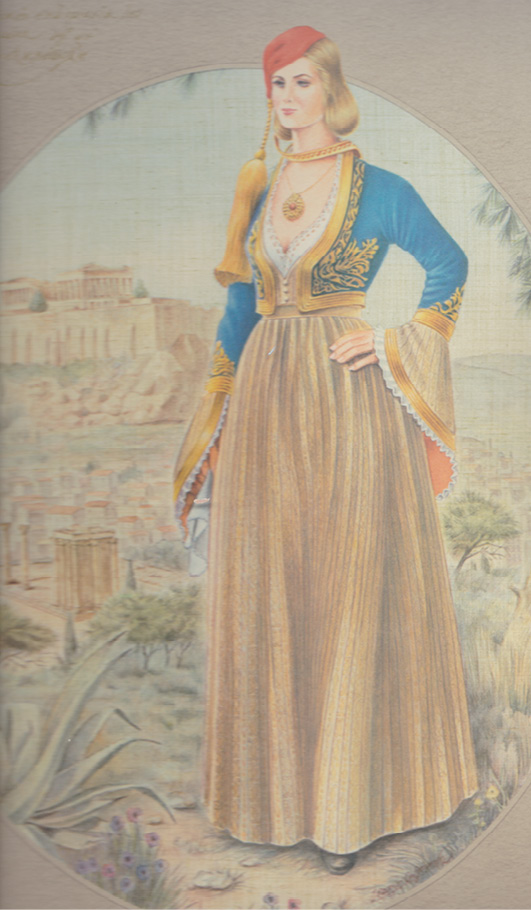
Figure 21.37. A woman of Athens. Coloured lithograph, nineteenth century, unidentified.
The rhetoric of such images gave political weight to expansionist national policies aimed at annexing territories, some with populations of a complex religious and linguistic mix, which had remained under Ottoman suzerainty at the time of Greek independence, notably Thessaly to the north, Crete to the south, and many of the islands.
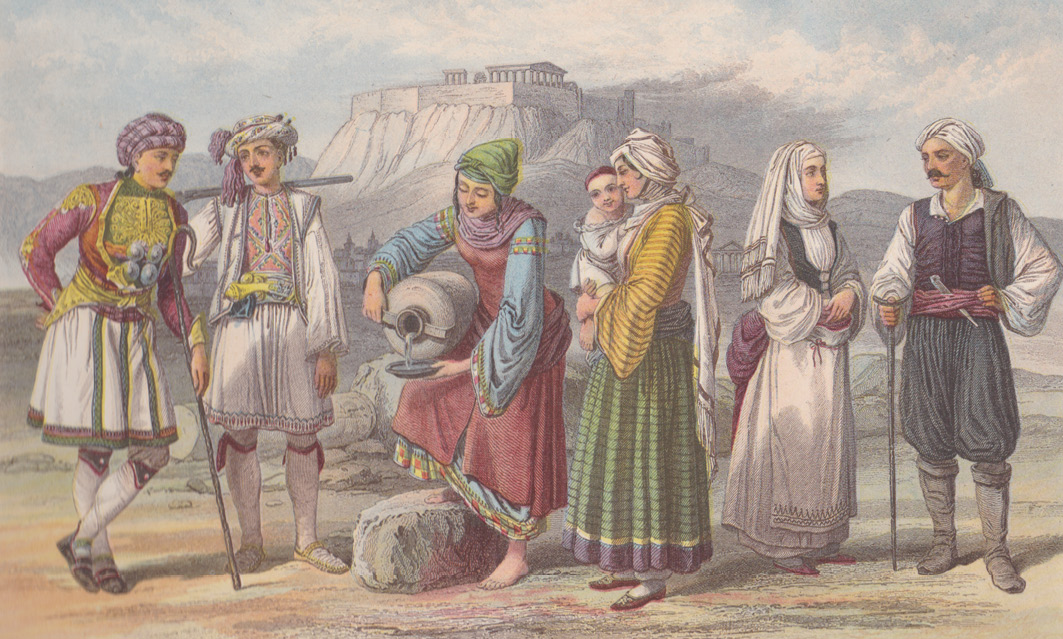
Figure 21.38. ‘Grecian race-Hellenes, Pelasgi; 1. Shepherd of Arcadia, in holiday dress. 2. Peasant-environs of Athens, in holiday dress. 3. Woman of Trikeri in Thessaly. 4. Woman and child-Island of Hydra. 5. 6. Man and Woman-Island of Crete. Engraving.220
One of the clearest statements of looking at the Acropolis through the lens of national identity can be found in the speech of Melina Mercouri of 12 June 1986, when, as the Minister of Culture, speaking in English, she addressed the students of the Oxford Union in England on the future of the sculptures from the Parthenon held in the British Museum in London: ‘You must understand what the Parthenon Marbles mean to us. They are our pride. They are our sacrifices. They are our noblest symbol of excellence. They are a tribute to the democratic philosophy. They are our aspirations and our name. They are the essence of Greekness.’221
However, even in the nineteenth century there were indications of local resistance to this yoking of modern to ancient Hellas, of a feeling that the whole neo-Hellenic project was a fantasy of foreigners, and that those who had fought the Greek Revolution, mainly a war of religion, with most of the fighters illiterate in their own language, let alone in that of the fourth and fifth century BCE, needed a more contemporary ideology and one more closely related to their more recent historical experience. As the unnamed Greek literary figure quoted in Chapter 14 told the visiting political economist Nassau Senior in 1857: ‘We do not consider the Parthenon as our national temple. The Parthenon belongs to an age and to a religion with which we have no sympathy […] Our capital is Constantinople; our national temple is Santa Sophia’.222 And there is evidence that the neo-Hellenizing of Athens was, for long afterwards, regarded as imported rather than indigenous, as the words of Kastromenos suggested.
In the late 1880s, there had begun another battle in the discursive wars, comparable to the arguments that led to the removal of the Frankish Tower, and this time the decision went the other way.223 For the building of the new Athens, workers were drawn in from all parts of the country and beyond. For the digging out of the Propylaia in the 1840s, Beulé had employed ‘Lacedaimonians’ from the district of ancient Sparta, where a new neo-Hellenic town was founded. In Athens, by the 1860s workers from the Cyclades, some from the small island of Anaphi, had made a settlement on the north-east slope of the Acropolis consisting of low white-washed houses and two new churches in the Byzantine style in accordance with the long tradition of the island. The women dressed in traditional clothes and drew water from the Klepsydra.224 The village is shown in this 2017 photograph at Figure 21.39.

Figure 21.39. Anafiotika village, a recent photograph. Eberhard Kern, ‘Blick aus der Anafiotika zur Akropolis’, 2 October 2017, Wikimedia Commons, public domain, https://commons.wikimedia.org/wiki/File:-Anafiotika-.jpg
In Figure 21.40, the sympathetic Corwin Knapp Linson allows us a glimpse of how the settlement looked at the time when many Greek intellectuals were demanding that it should be removed.
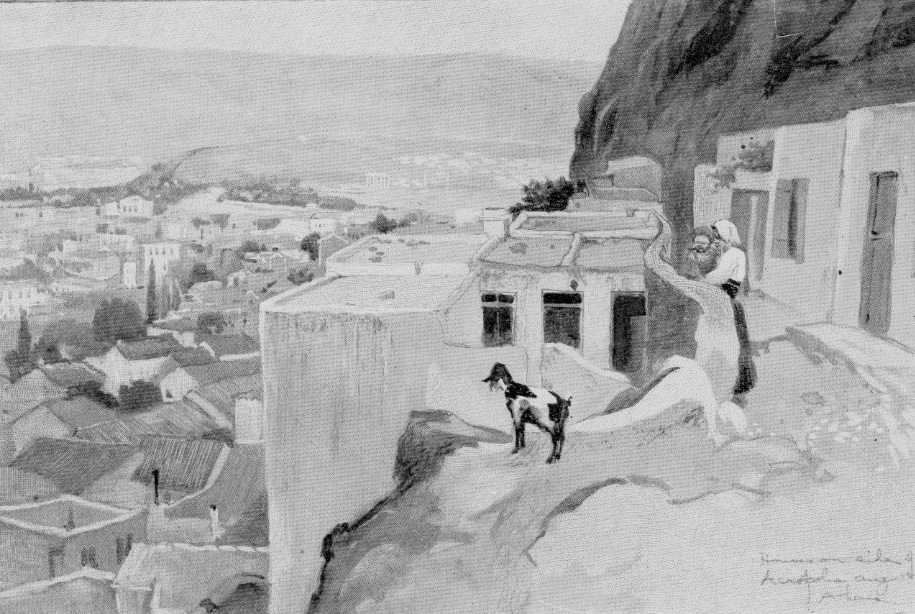
Figure 21.40. ‘Houses on the side of the Acropolis.’ Lithograph of a drawing by Corwin Knapp Linson, 1896.225
The arguments that led to the removal of the Tower were heard again, notably the prospect of priceless archaeological finds. But, as Caftanzoglou has pointed out, the debate went to the heart of the question: what was this imagined ‘nation’ of ‘Hellas’ if it excluded the citizens who were helping to build it? Was ‘Hellas’ a construct of metropolitans ashamed of people from the country districts? In the Anafiotica, living Greeks with their colourful gardens, their white houses, and their cheeky goats, shared a boundary fence with dead classical Hellenes who existed only in white marble. Although the summit was a limitable space, the Acropolis seen by most citizens was the whole rock from a distance. The contested ground was therefore the slopes. As Caftanzoglou noted, presenting the issue in anthropological terms as a political contest in the hierarchies of space, the Anafiotika was to some ‘a disorderly and polluting irruption of social time in the midst of a space that was to be lifted out of its context and set aside as a well-guarded zone that would surround and isolate the Acropolis from the disturbing presence of contemporary Greek society’.226
Whether by coincidence or—as is more likely—as a result of other arriving and indigenous forces, it was around the same time that we see evidence of a new modernist movement in Greek society. Perhaps, some writers suggested, the single-minded concentration on the ancient had gone too far: the heritage of Hellas was a precious gift, yes, of course, but it was also becoming an impediment to thinking more clearly about the present.227 The Archaeologist by Andreas Karkavitsas, the first novelist to write in demotic Greek, published in 1904, told the story of a man who in a manic search for antiquities finds a masterpiece, but when he installs it in his house it falls and kills him.228 And, whatever foreign visitors may have said about the success of the whole project, progress in persuading the Greek people to link their identity to the Acropolis had been slow.
The present Acropolis, which we can applaud as a triumph of late-twentieth-century archaeology, science, and technology, we can acknowledge is, in essentials, also the continuing result of a nineteenth-century way of viewing. In their search for timelessness the authorities of that era had produced a monument caught in the transient assumptions of their own time. In their search for purity, they had been forced into compromise, neither preserving the monument as it had historically come down to them nor undertaking a full imaginative reconstruction of how it may have existed in ancient times. In their quest for romantic authenticity, they had produced a muddled artificiality, an unsuccessful experiment in ‘experiential heritage’. In aiming for permanence, they had produced an episode in the history of conservation and its aims. However, since, from that time, the Acropolis has had no other role than to be looked at, to be the catalyst for meanings made from acts of seeing and cognition, the paradoxical net result has been to emancipate the viewer by requiring him or her to look, see, and view critically within a historical perspective that mentally offsets the long passage of time. The eye of the modern contemporary viewer, which confidently separates the new from the old in looking at the marble buildings, is obliged to do the same for the whole rock.
1 There were wars between Greece and the Ottoman Empire later in the century, notably in 1897, mentioned later in the Chapter.
2 The events and debates are described and critiqued, with the help of numerous contemporaneous sources, by Bastéa, Eleni, The Creation of Modern Athens: Planning the Myth (Cambridge: CUP, 2000). The ceremony was commented on by Balanos, Nicholas, Les Monuments de l’Acropole. Relèvement et conservation (Paris: Massin and Levy, 1938), 7.
3 The mythic event that, I will suggest, was presented to ancient viewers of the processions pictured on the frieze of the Parthenon is discussed in The Classical Parthenon, https://doi.org/10.11647/OBP.0279.
4 Sometimes spelled ‘anastylosis’, perhaps from a false etymological association with ‘style.’ According to Balanos, 7, what he calls the ‘neologism anastylosis’ [so spelled] was first officially used at a meeting of academies in Brussels in 1925, and was ‘consecrated’ at the meeting in Athens in October 1931 of which the Athens Declaration, a predecessor of the Venice Declaration of 1974, was one of the outcomes. To be discussed in Chapter 25.
5 Wikimedia Commons, https://commons.wikimedia.org/wiki/File:Ath%C3%A8 nes_Le_Pnyx,_l%27Ar%C3%A9opage,_l%27Acropole_et_l%27Hymette_-_Aligny_Claude_Fran%C3%A7ois_Th%C3%A9odore_Caruelle_D%27_-_1845.jpg.
6 More on this monument with an illustration in Chapter 24.
7 As with another set of images of the time, of which an example, was given as Figure [ ], they were not bound into a book but kept loose, so enabling them to be passed round and discussed as a drawing room practice.
8 A reference to the language agenda of Korais that was to be pursued alongside that of changing what today would be regarded as changing the buildings and therefore the visual ‘heritage’ as an embodiment of the collective memory.
9 Described and critiqued, using numerous contemporaneous sources, by Bastéa.
10 Wikimedia Commons,
11 Quoted in translation by Bastéa, 91.
12 The letter by Prince Hermann von Pückler-Muskau sent in 1836 informing Schinkel that his proposal had been rejected said that it was just as well that he had not seen the New Athens, ‘a miserable shanty town that would cause you to faint under the columns of the Parthenon.’ Quoted in translation by Bastéa, 91.
13 Described for the nineteenth century by [Horton and Linson] Horton, George, Modern Athens, Illustrated by Corwin Knapp Linson (London: Bullen, 1902), 16. It seems likely that this phenomenon, including the cooling potentialities of earthenware, was also known in ancient times.
14 The tall chimneys designed to catch the breezes, commonly found at that time across the whole of the eastern Mediterranean region are shown in Figure 4.10.
15 The building and rhetorical deployment of the cityscape in classical Athens is discussed in The Classical Parthenon, https://doi.org/10.11647/OBP.0279.
16 Not mentioned by Bastéa.
17 [Marchebeus] Voyage de Paris à Constantinople par bâteau à vapeur nouvel itinéraire orné de vues et vignettes sur acier, avec tableaux indiquant les lieux desservis par les paquebots à vapeur, sur la Méditerranée, l’Adriatique et le Danube, le prix des places et des marchandises, les distances et la valeur des monnaies par Marchebeus, architecte du gouvernement (Paris: Artus, 1839), opposite 113. The large tiled-roofed building shown on the slopes has not been identified: it may be part of the proposal, outbuildings intended to house soldiers, workmen, or horses. The role of the ancient cityscape, with its hills, in the self-fashioning of classical Athens is discussed in The Classical Parthenon, https://doi.org/10.11647/OBP.0279.
18 For example: ‘Raze the walls of the Acropolis, clear away the earth, leave the rock bare, and the Parthenon will be even more admirable — it will seem expanded.’ Slade, Turkey, ii, 293.
19 The ‘problem’ that the Parthenon was not in sight from the Areopagus hill is discussed in Chapter 22. My suggestion for how the classical Athenians conceived of the Parthenon and why they caused it to be built in the form that it took is offered in my attempt to recover the discursive environment in The Classical Parthenon, https://doi.org/10.11647/OBP.0279, with the results set out there also.
20 The cemetery was pictured, shortly before it was removed, as Figure 15.3.
21 Discussed, as part of a general history of the monument till his time of writing by Mark, Ira S., The Sanctuary of Athena Nike in Athens: architectural stages and chronology (Princeton: Hesperia Supplement 26, 1993).
22 Giffard, Edward, A Short Visit to the Ionian Islands, Athens, and the Morea (London: Murray, 1837), frontispiece ‘from a drawing by F.W. Newton.’ This was a different Newton, from Charles, later a keeper of antiquities in the British Museum, who was to be responsible, with the help of firmans obtained by Stratford Canning, for bringing antiquities from the Ottoman territories, including pieces from the tomb of Maussolos that were built into an imperial castle in Halicarnassus (modern Bodrum) to the British Museum.
23 Schroeder, Francis, Secretary to the Commodore Commanding the United States Squadron in that Sea, 1843–1845, Shores of the Mediterranean, with sketches of Travel (New York: Harper, 1846), i, opposite 92. Engraved by W.G. Jackman from a drawing by F. Schroeder. The pieces of carved marble built into the wall that are visible in the sketch, two victories sacrificing a bull, Acropolis Museum, inv. 972 and 2680, were from the Nike temple parapet. They were also noted by Flaubert, Gustave, Voyage en Orient (1849–1851): Egypte, Liban-Palestine, Rhodes, Asie Mineure, Constantinople, Grèce, Italie; édition présentée et établie par Claudine Gothot-Mersch; annotation et cartes de Stéphanie Dord-Crouslé (Paris: Gallimard, 2006), pp. 707–08. The slab had been noticed by Lord Sandwich in 1738, perhaps an indication that it had been put in place, and not destroyed, either at the time the Ottoman authorities dismantled the Nike temple as part of their modernization of the Acropolis defences after 1688. See [Sandwich] A Voyage Performed by the late Earl of Sandwich round the Mediterranean in the Years 1738 and 1739, Written by himself (London: Cadell and Davies, 1799), 61.
24 From a drawing by F. von Dardel, 1884, in Wachtmeister, Hans, Count, Medelhalsskizzer. Dagboksanteckningar under en resa i Norra Afrika. Grekland och Turkiet år 1884 … Med tecknigar af F. von Dardel (Stockholm: Norstedt & Söner, 1884), opposite 87.
25 It will be shown as Figure 24.4, as it stood after the recent conservation.
26 The legendary story is specifically linked to this place by Pausanias, i, xxii, 4. ‘From this point the sea is visible, and it was here, they say, that Aegeus cast himself down and perished.’
27 Mure, William, of Caldwell, Journal of a Tour in Greece and the Ionian Islands, with remarks on the recent history — present state — and classical antiquities of those countries (Edinburgh and London: Blackwood, 1842), ii, 69. The implications for understanding why the classical Athenians built the Parthenon are discussed in The Classical Parthenon, https://doi.org/10.11647/OBP.0279.
28 ‘It is an allegory in itself.’’ Warburton, Eliot, Esq., The Crescent and the Cross, or Romance and Realities of Eastern Travel (London: Colburn, 8th edition, 1851), 400, describing how the restored building appeared to him on his visit in 1843.
29 Engraving, from Ancient Marbles in the British Museum, Part IX, opposite 41.
30 Plut. Demetr. 8.2. The possible relevance of this evidence to the question of why the classical Acropolis took the form that it did, is discussed in The Classical Parthenon, https://doi.org/10.11647/OBP.0279.
31 Balanos, Plate 147.
32 Charbonnier, André, ‘Les Travaux de Relèvement des Monuments de l’Acropole’ in l’Illustration. No 4530, 28 December 1929, 818.
33 Marchebeus.
34 The contrast can be seen in a watercolour made around 1830 reproduced in Peytier, Eugène, The Peytier album in the Stephen Vagliano collection. (Liberated Greece and the Morea Scientific Expedition.) Presented with anintroduction by Stelios A. Papadopoulos. Notes on the plates by Agapi A. Karakatsani (Athens: National Bank of Greece, 1971), plate 30. The evidence for the 1805 firman (vizieral letter) that ordered Elgin’s agents to stop is noted in Appendix A.
35 Baynes, C.R., Notes and reflections, during a ramble in the east: an overland journey from India, visit to Athens, &c. by C.R. Baynes, Esq., of the Madras Civil Service (London: Longman, 1843), 219. ‘Baynes, capitaine anglais’ is on the passenger list in Marchebeus, xvi.
36 As reported in Chapter 19.
37 Baynes, Notes and reflections, 219.
38 Slade, Turkey, ii, 304. Slade’s professional opinion on the targeting skill of the Ottoman artillery was noted in Chapter 17. The change in the air quality and lightscape that began at the end of the nineteenth century is discussed, and illustrated in colour, in The Classical Parthenon, https://doi.org/10.11647/OBP.0279.
39 From the first edition, ii, 303. The phrase, that was made famous by Seferis, was adopted as the title of an online exhibition in 2019. Lagogianni-Georgakarakos, M. and Koutsogiannis Th. (eds) ‘These are what we fought for’ — Antiquities and the Greek War of Independence (Athens: Archaeological Resources Fund, 2020). An online exhibition.
40 Quoted by Galanakis, 8 from Section 3, chapter A, article 61 and drawing on the longer study by Kokkou, Angelikē, Hē merimna gia tis archaiotētēs stēn Hellada kai ta prōta mouseia (Athens: Kapon, 2009).
41 In Appendix B.
42 Kew FO 352/15 B, 444.
43 An image is available on Wikimedia Commons. At some time since it was ungrounded, it appears to have been polished to make it accord with prevailing attitudes of how Greek sculptured images should appear. The village build by the workers from Anaphe on the slopes of the Acropolis is discussed and illustrated later in this Chapter.
44 Shown as Figure 21.10, it appears to be a copy made much later of the shield of the Athena Parthenos.
45 Kew FO 32/50, letters from Lord Prudoe to James R. Dawkins, the minister (representative) of the British Government to the Greek Government, 1 January and 19 February 1835.
46 Murray, A. S., L.L.D., F.S.A., Keeper of Greek and Roman Antiquities, British Museum, The Sculptures of the Parthenon (London: Murray, 1903), opposite 126. A detail is given in The Classical Parthenon, https://doi.org/10.11647/OBP.0279 as part of a discussion about the possible contribution of Pheidias and Pericles.
47 Pictured as Figure 17.2. Talmage, T. de Witt, From the Pyramids to the Acropolis, Sacred Places seen through Biblical Spectacles (Philadelphia: Historical Publishing Company, 1892), 279. His part in the debates on the Areopagus hill is discussed in Chapter 22.
48 Felton, Cornelius Conway, Familiar Letters from Europe (Boston MA: Ticknor and Fields, 1865), 330.
49 Felton, 325.
50 Harrison, James Albert, Greek Vignettes. A Sail in the Greek Seas, Summer of 1877 (Boston: Houghton Osgood, 1878), 183, reporting a story by his guide.
51 The full circumstances, with documentation, are noted in: http://www.cr.nps.gov/history/online_books/wamo/stones.pdf
52 Gadsby, John, A Trip to Sebastopol (London: Gadsby, 1858), 117.
53 Hobhouse, 1858 edition, i, facing 296.
54 Among the books in which I have found it reproduced are Hobhouse, 1854, Proust, Samuel S. Green, Schweiger-Lerchenfeld, and Leo de Colange in 1886, by which time it was over forty years out-of-date.
55 Private collection. Another copy, described as ‘albumenised salt print from wet-collodion glass-plate negative’ is reproduced in Robertson, James, Photographs, ‘Athens and Grecian Antiquities 1853–1855’, From the Photographic Archive of the Benaki Museum (Athens: Museum of Cycladic Art, 1998), opposite 66, from the copy in the Benaki Museum. In his journal for 15 December 1853, Felton notes that ‘A young Englishman, named Robertson, was here for a few days’ that appears to give us a date, Felton, 321. Felton also notes that Robertson went to Athens in the autumn of 1853, in a footnote on page 44 of the American edition of Carlisle’ s Diary in Turkish and Greek Waters. However, taking account of the time needed for the photograph to have been taken, the plate sent to London, copied by a wood engraver, and impressions made in time to be incorporated into Hobhouse’s Travels, that is annotated with printed remarks and dated 1854, it must have been taken some time earlier. A watercolour by Stilling, made in 1853, reproduced in Bendtsen, Fig. 37, is so nearly identical that it may have been copied from the same photograph.
56 Discussed in Chapter 8.
57 ‘Après les propylées on arrive au Parthénon par un chemin bordé de deux murs hauts de 4 pieds anglais. Ce chemin fesait un détour et venait aboutir à l’est du Parthénon. Du côté du Nord le mur avait une porte à grille qui donnait passage près do Portique des Caryatides. De cette manière la forteresse était divisée en deux. Une partie de la muraille du Nord existe encore maintenant. On y voit des petits trous où étaient pendu des ornemens.’ Pittakis, pp. 257–58.
58 ‘Un mur de séparation, dont on voit encore les traces, les divisait entre eux’ Chenavard, A.M., Architecte, Rey, E., Peintre, Professeurs à L’Ecole des Beaux Arts de Lyon, Voyage en Grèce et dans le Levant (Lyon: Boitel, 1849), 23.
59 Discussed in The Classical Parthenon, https://doi.org/10.11647/OBP.0279.
60 The letter in French dated 7 October 1897 is reproduced in facsimile in Mallouchou-Tufano (1988), 96.
61 ‘finely chiselled fragments which lie about on every side.’ Wickenden, J. Frederic, Seven Days in Attica in the Summer of 1852 (London: Harrison, 1857), 27. ‘Here and there it seems as though the chisel of the sculptor had been but just removed from the triglyph or metope; the fragments that strew the ground are fresh as when new …’ Christmas, Rev. H., M.A. F.R.S. F.S.A. Author of ‘The Cradle of the Twin Giants, Science and History,” etc. The shores and islands of the Mediterranean, including a visit to the seven churches of Asia, in three volumes (London: Bentley, 1851), ii, 257.
62 To be discussed with evidence from the ancient authors in The Classical Parthenon, https://doi.org/10.11647/OBP.0279. It was seldom understood in the nineteenth century that many ancient viewers, who through their membership of commissions knew what was intended, were not passive receivers of an illusion or a deception.
63 For example, Anderson, Rev. John, Wanderings in the land of Israel and through the wilderness of Sinai, in 1850 and 1851 (Glasgow: Collins, [n.d.], c.1852), 20, probably reporting conversations among architects. ‘[T]he ignorance of which principle [entasis] has destroyed the effect of many a Doric building, otherwise correct.’ Another comment by [Author of ] Photograms, 127.
64 Penrose, 33. No ancient water level, as far as I know, has survived.
65 Penrose, Vignette to chap. II, section II, On the Elevation or Orthographical Proportions of the Parthenon, 12.
66 Vignette to chap. XII, on the Temple of Jupiter Olympius at Athens, 17. There was, of course, no actual viewing station for the composer of this image, that also has the incidental effect of bringing out yet again the extent and clarity of the mutual sightlines that were made possible by the micro-climate.
67 Noted by Reinach in 1887, ii, 43, as a discovery by Burnouf. The observation, it was said by others, as part of an international rivalry to claim the credit, had first been made by Cockerell. Nugent, i, 17. ‘Thus it was left to Mr. Cockerell, and to the Germans who have followed him in the inquiry, within the last few years to discover that in the Parthenon and Temple of Theseus there is not one straight line.’ The numerous refinements in the design of the Parthenon, including notes on when they were discovered, are discussed by Haselberger, Lothar, ‘Bending the Truth: Curvature and Other Refinements of the Parthenon’, in Neils, The Parthenon: From Antiquity to the Present, 101–57. The claim that the frieze tilted inwards towards the top, in addition to having been more deeply carved at the bottom, is discussed in The Classical Parthenon, https://doi.org/10.11647/OBP.0279.
68 [Charlemont] The Travels of Lord Charlemont in Greece and Turkey 1749, edited by W.B. Stanford and E.J. Finopoulos (London: Tregraph for Leventis Foundation, 1984), 132. The assistant, named as Murphy, may have been a personal servant brought from Ireland.
69 Pennethorne, Elements, 15.
70 Observed by Magne as early as 1894, noting as a possible exception the temple to Apollo at Didyma, in Études, 65. Magne, Études,1. The implications for building an understanding of how the ancient viewers of the classical era saw the Parthenon are discussed in The Classical Parthenon, https://doi.org/10.11647/OBP.0279.
71 As discussed in Chapter with an illustration of the plaque at Figure 10.6.
72 Noted by Wyse, Thomas, Impressions of Greece; with an introduction by his niece, Miss Wyse; and letters from Greece to friends at home by Arthur Penrhyn Stanley (London: Hurst and Blackett, 1871), 64.
73 The mutilations by the Christians after their takeover of the eastern Roman Empire of the stories in stone presented on the Parthenon were seldom mentioned. They are relevant to attempts to understand the central slab of the east frieze as will be discussed in The Classical Parthenon, https://doi.org/10.11647/OBP.0279, as well as exemplifying how mutilation of images is a rhetoric of display and performance.
74 A modern discussion by Karakitsou, Elena and Konteas, Zannis, ‘Empolia and poloi from the Acropolis monuments’, in The Acropolis Restoration News, no 13, December 2013. An early photograph of a broken wooden plug in a column drum from the Erechtheion is reproduced by Mallacho-Tufano, 39. The fact that the method of building the columns of the Parthenon, and of the other ancient buildings, helped them to withstand both horizontal and vertical movements had already been noticed by Sebastiano Ittar, one of Elgin’s architects, when he examined fallen columns in 1802, although his finding was not then made available in published form, For example ‘sbranche di ferro impiombate che legano le assie orizontalmente.’ And ‘piastre di fero [sic] che afermano [sic] le azioni verticalmente.’ Quotations from notes by Ittar due to be published in her forthcoming work kindly supplied by Luciana Gallo. A possible reference to earthquake proofing in the Iphigeneia among the Taurians of Euripides is noted in The Classical Parthenon, https://doi.org/10.11647/OBP.0279.
75 Penrose, 22.
76 For example, Mott, 193. Pittakis, the curator, was reluctantly prevailed upon to allow Mott to remove a specimen although he was well aware of its value as a source of knowledge.
77 The proclivity, or as Theophrastus said, using the word ‘nature’ in its sense of fitted for a purpose, of pieces of apparently dead wood of certain long-lived trees, notably the olive, to sprout when exposed to moisture was noted by in his treatise On the Causes of Plants, 4.3. That it was reasonable in the 5th and 4th centuries BCE for the Athenians of the classical period to believe that they could design and construct buildings that could, with minimal maintenance, last ‘for ever’ is discussed in The Classical Parthenon, https://doi.org/10.11647/OBP.0279.
78 Discussed in The Classical Parthenon, https://doi.org/10.11647/OBP.0279.
79 Euripides, Selected Fragmentary Plays edited by C. Collard, M.J. Cropp and K.H. Lee (Warminster: Aris and Phillips, 1995), i, 158, fragment 360, lines 12–13.
Quoted by Connelly, Parthenon Enigma, 289. This passage, that was used by Lycurgus 1.00, to make a rhetorical point, was known before the other passages first published by the late Colin Austin in 1948, that came from a roll of papyrus used as waste to encase an Egyptian mummy in the Louvre. That the word for peg, ‘harmos’, was cognate with the many uses of the word ‘harmonia’ would not have escaped the ancient hearer, whether of the play or of Lycurgus’s reuse of it in a forensic context.
Whether the xenophobic sentiment was answered by another character or by the Chorus, as was normal in the tragic drama as a dialogic form, is not known. Praxithea also justifies her decision to allow her daughter to be put to death as a human sacrifice, by appealing to the notion of ‘charis’, a word that implied mutual obligation, as will be discussed in The Classical Parthenon, https://doi.org/10.11647/OBP.0279.
80 The passage, in Aristot. Const. Ath. 26, was translated by Kenyon who first published it from the recently discovered papyrus as: ‘ … in the year of Antidotus, owing to the large number of the citizens an enactment was passed on the proposal of Pericles confining citizenship to persons of citizen birth on both sides.’ As Sara M. Wijma has pointed out, this translation of the Greek ‘καὶ τρίτῳ μετὰ τοῦτον ἐπὶ Ἀντιδότου διὰ τὸ πλῆθος τῶν πολιτῶν Περικλέους εἰπόντος ἔγνωσαν μὴ μετέχειν τῆς πόλεως, ὃς ἂν μὴ ἐξ ἀμφοῖν ἀστοῖν ᾖ γεγονώς’ may be an anachronistic modern privileging of the political over other valid ways in which the population could share and participate in the life of the city. Embracing the immigrant: the participation of metics in Athenian polis religion (5th-4th century BC) (Stuttgart: Franz Steiner Verlag, c.2014), 6 and elsewhere. And in recovering a historical understanding classical Athens we may do better to see the operation of the society as a matter of dynamic participation alongside documentable legal status. The fact that certain men who had previously participated in the political institutions were disenfranchised is however a theme in the Ion of Euripides. And as I will suggest in The Classical Parthenon, https://doi.org/10.11647/OBP.0279, it may be relevant to answering the old puzzle of what is the episode presented as the central event on the east frieze of the Parthenon.
81 Noted by [Euripides Ion] Martin, Gunther, ed., Euripides, Ion, Edition and Commentary (Leiden: de Gruyter, 2018), 431 ‘the messengers uses ‘several terms that have a technical ring to them’ referring to the Ion, especially pp. 1126–36.
82 My suggestion for how we can construct the main features of the discursive environment as a way of contextualizing public policy deliberations leading to decisions on current questions, such as why the civic institutions of classical Athens decided to build the Parthenon is discussed and an example offered as an experiment in The Classical Parthenon, https://doi.org/10.11647/OBP.0279.
83 They were Lucien Magne, Francis Penrose and Josef Durm. Their work is described by Magne, Lucien, Professeur à l’École des Beaux-Arts, Architecte du Gouvernement, Le Parthénon — Études faites au cours de deux missions en Grèce (1894–1895) (Paris: Imprimerie Nationale, 1895), 10, and in a later account in Magne, Lucien, La Conservation du Parthénon, Conference Faite le 31 Mars 1905 à la Sorbonne (Paris: Imprimerie Nationale, 1905).
84 Kastromenos, Prologue dated 1 October, Athens. Pitttakis’s book had been written in French.
85 Durm, Josef, Ἡ καταστασις του Παρθενωνος και των λοιπων ἀρχαιων μνημειων των Ἀθηνων. In Ἑλληνικη Ἀρχαιολογικη Ἑταιρια. Ἀρχαιολογικη Ἐφημερις (Athens: Ἐφημερις Ἀρχαιολογικη … Περιοδος τριτη) 1895), plate 2. Private collection. The image retains indications that is copied from a larger folding image in a printed book.
86 The observation by Cockerell and others that the Parthenon had been over-engineered was noted in Chapter 5. How Elgin’s agents were stopped from taking more from the west porch by a firman arranged by the French ambassador Brune is discussed in Appendix A.
87 The reasons can only be understood by recovering the discursive as well as the other environments of classical Athens, that I attempt to recover in The Classical Parthenon, https://doi.org/10.11647/OBP.0279.
88 Woods, ii, 253. Some of the damage done after Elgin’s removals is documented by Payne, Emma M., ‘3D imaging of the Parthenon sculptures: an assessment of the archaeological value of nineteenth-century plaster casts’ in Antiquity vol 93, issue 372, December 2019, pp. 1625–42.
89 [Disraeli], The Letters of Benjamin Disraeli, edited by John Matthews et al. (Toronto: University of Toronto Press, 1982–2014), i, 410. Disraeli presented the piece to William Beckford with the suggestion that it should be made into a paperweight. What happened to it is unknown.
90 ‘[I]t must have been very perfect till a day or two before we saw it where some of the Bavarian/Barbarian guard had broken the horses legs and knocked off other parts of the figure.’ Young, manuscript letter, British Museum. The damage to the metope is discussed by Korka, Fragments, pp. 41–44, with photographs. Young’s testimony is at variance with the story that this fragment and a fragment of the frieze had been obtained by Dodwell and presented to King Ludwig, as discussed by Brommer, Der Parthenonfries, pp. 6–7. Whether Young’s near contemporary, but not eye-witness, account is to be preferred is hard to judge, even if it was derived from Gropius or Pittakis, but we can note that any account that pushed back the time of the damage to pre-Revolutionary times when pilfering was more common, rather than having to accept the responsibility of his own soldiers, was less embarrassing to the philhellenic king of Bavaria and to his nephew the king of Greece.
91 Wines, E.C., Two years and a half in the navy; or, Journal of a cruise in the Mediterranean and Levant, on board of the U.S. frigate Constitution, in the years 1829, 1830, and 1833 (London: Bentley, 1833), ii, 301.
92 Ibid.
93 For Reschid’s letter to the sultan about the idolatry of the westerners, see the quotation in Chapter 7 and full version in Appendix C.
94 Linton, William, Corresponding Member of the Archaeological Society of Athens, Author of “Ancient and Modern Colours’ &c., Scenery of Greece and its Islands, Illustrated by Fifty Views, Sketched from Nature, Executed on steel, and described en route, with map of the Country (London: published privately by the artist, 1856), 5. The Parthenon … ‘guarded from those worshippers of antiquity who, if not thus prevented, would soon carry off every fragment of this glorious remnant of the past.’ Bush, Eliza C., My pilgrimage to eastern shrines (London: Hurst and Blackett, 1867), 16.
95 Young, James Foster, Brasenose College, Oxford, Five Weeks in Greece (London: Sampson Low, 1876), 37.
96 Ogston Journal, 73, Aberdeen University Library. Paul Eudel, who visited in 1872, made no secret of having taken pieces of Pentelic marble from the Acropolis that he intended to have cut into the shape of a pyramid. Eudel, Paul, Constantinople, Smyrne et Athènes. Journal de voyage. Illustrations de Frédéric Régamey et A. Giraldon (Paris: Dentu, 1885), 375. Eudel lists the great variety of antiquities that were then openly on sale in the market in Athens, although without apparently realizing that some were fakes or facsimiles. As another example: ‘We climb to the top of the western pediment for the wide sweep of view … As we descend we peer about for a bit of marble as a memento of our visit; but Lord Elgin has left little for the kleptomaniac to carry away.’ Warner, Charles Dudley, author of [a list of titles] In the Levant (London: Samson Low 5th edition, [n.d.], after 1876), 365.
97 Eddy, Daniel C., D.D., Walter’s Tour in the East: Walter in Athens (New York: Sheldon, 1865), 133. But when ‘Walter’ succeeds in deceiving the watchful guards on the Acropolis and breaks off a piece of the Parthenon, he is made to feel ashamed. Eddy, pp. 95–98. The tours are discussed in Chapter 22.
98 Reinach, Joseph, Voyage en Orient (Paris: Charpentier, 1879), ii, 37.
99 Cathedral of the Pines website.
100 [Merezhkovsky, Dmitry Sergeyevich], The Acropolis: from the Russian by G.A. M[ounsey] (London: privately printed, c.1909), 35.
101 Merezhkovsky, 35.
102 The Times, Tuesday 8 January, 1889, issue 32590, page 10, column D.
103 Brandes, Georg, Hellas, Travels in Greece, authorised translation by Jacob Wittmer Hartmann (New York: Adelphi, 1926), 172–73. ‘The Madeleine of Paris is no more a Greek temple than a tragedy of Racine is a tragedy of Sophocles.’ De Vere, Picturesque Sketches, i, 87.
104 Milnes, 125.
105 Lamartine, i, 81.
106 Lamartine, i, 81.
107 Trevelyan, Sir Charles, From Pesth to Brindisi being notes of a tour in the autumn of 1869 (Edinburgh: Edmonston and Douglas. London: Hamilton Adams, [n.d.], c.1870), 20.
108 Reisinger, Ernst, ed., Griechenland, Landschaften und Bauten, Schilderungen Deutscher Reisender (Leipzig: Im Insel Verlag, 1916), 4.
109 The emergence from brutish narrative is described in The Classical Parthenon, https://doi.org/10.11647/OBP.0279. My suggestion of how that narrative, when regarded as part of the discursive environment alongside the physical, can be used to understand the mentalities of classical Athens, including the decision to build the classical era Parthenon, is also explored in The Classical Parthenon, https://doi.org/10.11647/OBP.0279, and its findings applied to offering a new answer a specific puzzle.
110 Monody 3. Aristides writing in the second century CE imagines a viewer looking down from above, but the metaphor works well looking up from ground level as well.
111 Aristides, P. Aelius, The Complete Works, translated into English by Charles A. Behr (Leiden: Brill, 1986), p. 3.
112 Quoted in the Greek, and with an English translation in, for example, Acropolis Conservation, 31.
113 The ancient Athenian progress from brutishness narrative is discussed in The Classical Parthenon, https://doi.org/10.11647/OBP.0279.
114 Author’s photographs, 3 October 2013.
115 Decree of 3/15 April 1833 quoted by Amalia Pappa in Tsarouchas, 19.
116 Suckow, Friedrich von, The Shadow of Lord Byron, or, The voice of Akropolis to the British Nation (Stralsund: C. Loeffler, 1835), 12. Von Suckow, who says his pamphlet was written in Nauplia in 1834, may have been a member of the Bavarian mission. The role of the light in the experience of the historic ancient viewer and user is discussed in The Classical Parthenon, https://doi.org/10.11647/OBP.0279
117 The archaeological excavations were recorded at the time by, among others, Cavvadias, Beulé, Diehl, Charles, Excursions in Greece to Recently Explored Sites of Classical Interest (London and New York: Grevel, 1893) Translated from the German; and in archaeological journals year by year. A list of the excavations in Athens from 1828 until the end of the century in Papageorgiou-Venetas, 269 and in Iakovidis, Spyros E., The Mycenaean Acropolis of Athens (Athens: Archaeological Society of Athens 2006, translated from the Greek edition, 1962), 25. Some of the drawings made during the later Acropolis excavations are reproduced in Bundgaard, J.A., The Excavation of the Athenian Acropolis 1882–1890, The Original Drawings edited from the papers of Georg Kawerau (Copenhagen: 1974). A fuller chronology for the years 1832–1836 in Ross, Ludwig, Archäologische Aufsätze. Erste Sammlung (Leipzig: Teubner, 1855), pp. 1–11.
118 Discussed by Keesling.
119 The kore (Acropolis Museum, number AkrM 671) is noted by Discussed by Stewart, Andrew, ‘The Persian and Carthaginian Invasions of 480 B.C.E. and the Beginning of the Classical Style: Part 1, The Stratigraphy, Chronology, and Significance of the Acropolis Deposits’, in American Journal of Archaeology, 112 (2008) pp., 377–412, at 382.
120 Cavvadias, pp. 6–10.
121 Cavvadias/Kavvadias, Panagiotes, Fouilles de l’Acropole/texte descriptif de P. Cavvadias (Athens: Karl Wilberg, 1886). Plate 1, slightly trimmed. The same photograph reproduced in Cavvadias and Kawerau, 26.
122 I give the title given by Mahaffy, Rambles (1887 edition), opp. 56, based on a wrong interpretation. The photograph has frequently been reproduced including in Athens, 1839–1900, A Photographic Record, 296. A diagram and photograph of the findspot is in Cavvadias and Kawerau, 23–26.
123 The word used by Mahaffy, Rambles (1876 edition), 61.
124 For example ‘Avant tout, elles sont des oeuvres d’art’ Lechat, Henri, Au Musée de l’Acropole d’Athènes : études sur la sculpture en Attique avant la ruine de l’Acropole lors de l’invasion de Xerxès (Lyon: A. Rey, imprimeur-éditeur; Paris: Librairie A. Fontemoing, 1903) 4.
125 Lechat, Henri, Ancien Membre de l’École d’’Athènes, Chargé de cours à l’Université de Lyon, Au Musée de l’Acropole d’Athènes: études sur la sculpture en Attique avant la ruine de l’Acropole lors de l’invasion de Xerxès (Lyon: A. Rey, imprimeur-éditeur; Paris: Librairie A. Fontemoing, 1903), opposite 150.
126 Eur Ion 25. A character in Lucian’s satirical dialogue about sexual love, who unfavourably compares women with boys, sneers at the perfumed, painted, and high-spending women who wear snakes on their wrists and arms (‘I wish they were real snakes instead of gold’) Erotes 41.Other ancient authors who mention the golden snakes, including Menander, Hesychios, and Pollux, some of which may have derived their information from the Ion, are noted by Lechat, who does not mention the reference in the Ion.
127 Eur Ion 1007, 1009.
128 As can be seen, most obviously on the Varvakeion statuette in the National Archaeological Museum, Athens, NM129, of which there are many reproductions in two dimensions, including photographs taken from different angles in Davison, iii, 2–5.
129 Illustrated by Taplin, Oliver, Pots & plays: interactions between tragedy and Greek vase-painting of the fourth century B.C. (Los Angeles: J. Paul Getty Museum, 2007), an open access publication, where it can be seen at page 221. Taplin suggests that the picture: ‘May well be related to a tragedy about the daughters of Kekrops’, but even if it is not related to a play, it shows that the marker of autochthony was recognizable far from Athens over a long period, and, in the hands of the owner/user, it could cross from one story-telling medium to another. Described as ‘Apulian calyx-krater (fragmentary) ca, 380s Close to the Black Fury Painter H: 36.6cm Malibu, J Paul Getty Museum 77. AE 93.’ A two-and two half twist snake bracelet is prominent in an engraving of an elaborately dressed woman apparently putting make-up on her face while looking at a mirror in Baxter, Thomas. An Illustration of the Egyptian, Grecian, and Roman Costume; in forty outlines, with descriptions, selected, drawn, & engraved, by Thomas Baxter (London: printed for William Miller, 1810), unnumbered, no source given. Two white ground kylixes, one in Oxford, the other in the Metropolitan Museum in New York, both unprovenanced and acquired in recent times, picture young women wearing snake bracelets is reproduced in Connelly, Portrait of a Priestess, 113. An image of a female figure, wearing an elaborate costume and headdress, alongside what appears to be a swan, is pictured on a white-ground lekythos, whose manufacture is dated on stylistic grounds to c.490. In the Hermitage Museum, St Petersburg, from a collection purchased in 1901, reproduced in [Kaltsas and Shapiro] Worshipping Women: Ritual and Reality in Classical Athens edited by Kaltsas, Nikolaos and Shapiro, Alan (New York: Onassis Foundation, and Athens: Hellenic Ministry of Culture and National Archaeological Museum, 2008), no 36. The signification of such large, high-flying, water birds is discussed in The Classical Parthenon, https://doi.org/10.11647/OBP.0279.
130 Notably in answering the old question of what is pictured the central scene on the east frieze as will be discussed in The Classical Parthenon, https://doi.org/10.11647/OBP.0279.
131 The Judaeo-Christian discourse of ‘idolatry’ and its responsibility for the destruction and the display of the mutilation of images, is discussed in The Classical Parthenon, https://doi.org/10.11647/OBP.0279. It had the incidental effect of enabling the huge marble block that pictured the central scene to be preserved and in part ‘saved’ albeit so that it could picture itself as having been officially and its rhetorical tendency altered, the key scene presented on the Parthenon frieze to be reimagined back into its pre-mutilated state.
132 As reimagined in The Classical Parthenon, https://doi.org/10.11647/OBP.0279.
133 As shown in Figure 21.20. A possible exception, the ‘Seated Athena’ is discussed and shown in Chapter 21.
134 Some of the drawings made during the excavations are reproduced in Bundgaard.
135 Woodcut, accompanying an article on the recent finds cut from the Danish newspaper Illustreret Tidende, no. 29, date unknown c.1882. Private collection.
136 Black, 164.
137 Penrose, 3.
138 A few indications of the Acropolis town streets c.1799 can be discerned in the map ‘Athens, Antient and Modern, Reduced from a survey presented to the Editor by John Spencer Smythe Esqr. FRS FSA &c &c &c Published 1st May 1815, by J. Mawman, 39 Ludgate Street, London’, in Tweddell Remains, opposite 275.
139 Discussed in Chapter 7.
140 The immense number of small artefacts discovered in the excavations is discussed by Wagner, Claudia. Dedication Practices on the Athenian Acropolis. D.Phil thesis University of Oxford, 1997. https://ora.ox.ac.uk/objects/uuid:6f2e2c02-7bc0-43c0-843c-cc76217c1485 Many were still unsorted and unavailable at the time she did her research.
141 Garston, i, 123.
142 William Turner, in Athens in 1812, remarked on a birdcatcher ’by the walls near the Erechtheum.’ Turner, i, 326. The ancient understanding that birds had developed their own cultures, part of general world view, is discussed in The Classical Parthenon, https://doi.org/10.11647/OBP.0279
143 Published in 1903 by H.C. White Co., not further identified. Private collection from a modern scan.
144 Quoted by Wilson Jones, xiii.
145 Linton, Preface. In defending his decision to go ahead with his own book, he invoked a need to present to each succeeding generation the timeless values that the monument embodied, ‘which no evolutions of fashion can shake, and no scholastic controversies obscure’, an example of static aesthetic universalism discussed in Chapter 9. For the agenda-setting role of Pausanias see Chapter 4.
146 The implications for attempting to understand why the classical Parthenon was built in the form that it took are discussed in The Classical Parthenon, https://doi.org/10.11647/OBP.0279.
147 Garston, i, 128.
148 The site of the Ergasterion was the subject of two watercolours by Skene made on 28 and 31 May 1838, Skene I and II.
149 Hurwit Acropolis in the Age of Pericles, 147.
150 Mure, ii, 78. Other accounts include ‘a curious collection of bronzes, terra-cotta vases, and other things which were found in the ruins of the ancient Parthenon.’ Grosvenor ii, 148, a list that is itself confined to ‘works of art.’
151 As discussed in Chapter 7.
152 Discussed in Chapter 24.
153 Discussed in Chapter 24.
154 Burford, Alison, The Greek Temple Builders at Epidauros, A social and economic study of building in the Asklepian sanctuary, during the fourth and early third centuries B.C. (Liverpool: Liverpool UP, 1969), 59.
155 Paus. 5.15.1.
156 Hp. Aph. 5.9
157 The tools are not noted as amongst the objects that were held in the Old Acropolis Museum when they were first catalogued. [Acropolis Museum] Catalogue of the Acropolis Museum [by Guy Dickins and Stanley Casson] (Cambridge: CUP, 1912, 1921).
158 For example, ‘fragments of sculpture, skulls, instruments used by sculptors to draw lines (one of which was presented to me) and a multiplicity of other things.’ [Egerton, Catherine, Lady Ellesmere] Journal of a Tour in the Holy land in May and June 1840 (London: privately printed, 1841), 127.
159 Scitivaux, Roger de, Voyage en Orient … Précédé d’une notice biographique par M. le comte de Ludre. Orné de … lithographies d’après les dessins de l’auteur par J. Laurens (Paris: Morel, 1873), 180.
160 Information kindly supplied by Professor Pandermalis, director of the Acropolis Museum, in 2013.
161 For example, ‘Minney [the lady-in-waiting] succeeded in obtaining a lead pencil, or rather plummet, a great many of which, with colours &c in a wooden box, had just been dug up in what had evidently been formerly the habitation of an artist. From various data they were supposed to have lain there about two thousand years.’ Damer, the Hon. Mrs G.L. Dawson, Diary of a Tour in Greece, Turkey, Egypt, and the Holy Land (London: Colburn, 1841), i, 27. Almost no artefacts made of wood have survived from ancient Athens.
162 For example, Palagia, Olga, ed., Greek sculpture: function, materials, and techniques in the archaic and classical periods (Cambridge: CUP, 2006). A project, ‘The Art of Making’ run by King’s College, London includes a data base of tool marks found on ancient artworks and examples of modern tools that are thought to be unchanged in essentials since ancient times, but at the time of writing does not include information on the actual tools used in ancient times of which many examples have been found at other sites and often displayed in museums, as, for example, at the time of writing, in Corinth. http://www.kcl.ac.uk/artshums/depts/classics/research/proj/art.aspx
163 Notably the ‘paradigms’ of Plato. Discussed further in The Classical Parthenon, https://doi.org/10.11647/OBP.0279.
164 ‘M. Heydenstan lui remit en présent le doigt d’une statue colossale fort beau, trouvé au Parthénon et regardé comme “le pouce de la grande statue de Minerve”’. Buchon, Alexandre, Voyage dans l’Eubée, les îles Ioniennes et les Cyclades en 1841 publié pour la première fois avec une notice biographique et bibliographique, par Jean Longnon; préface de Maurice Barrès, de l’Academie Française (Paris: Paul, 1911), xli, a reference only recently noted. Heydenstan has not been identified, but since his name is linked with that of Villeroy, the French architect where he studied the curvature of the Parthenon, and was in Athens at the same time as Buchon, he may have been an assistant. A remark in the diary of Dawson Damer for 15 October 1839 shows that the piece had been discovered by then. ‘Dr Bendimer, our physician, came up to me on his return with his eyes sparkling with such delight that I thought he had at least discovered the little finger of the golden Minerva.’ Damer, i, 43. It may therefore have come to light when the mosque within the Parthenon was being dismantled. I should like to thank Esther Eidinow, Susan Deacy, and Kenneth Lapatin for their help and suggestions.
165 Burges, ‘Metal work album’, BURG 68, p. 58. Courtesy of RIBA Sackler Gallery, Victoria and Albert Museum, London. The inscription in pencil has not yet been deciphered.
166 ὡς μέγαν ἄρ᾽ εἶχες ὦ πότνια τὸν δάκτυλον. Aristoph. Kn. 1170.
167 Anderson, Carl A., ‘Athena’s Big Finger: An Unnoticed Sexual Joke in Aristophanes’ Knights’, Classical Philology, 103, (2), April 2008, 175–81.
168 Discussed by Tsakirgis, Barbara, ‘Tools from the House of Mikion and Menon’ in Miles, Margaret M., Autopsy in Athens: recent archaeological research on Athens and Attica (Oxford: Oxbow Books, 2015), 9–17.
169 Casson, Technique, vii, quoting Petrie, Seventy Years, 56.
170 As discussed in Chapter 18. His attempts to give viewers to the British Museum as full an understanding of the Parthenon as was possible off-site, that were largly nullified by the imposition of a rhetoric of romanticism that were discussed in Chapter 9.
171 Breton, Athènes, 46. Reproduced also by Kokkou, 167. Earlier in the century it seems to have been fenced off as noted by Temple, 78. The main contents in 1851 of the temporary museums, Pinacotheca, Nike temple, and Theseion, but not of the disdar’s house or the caves are noted by Flaubert, Gustave, Voyage en Orient (1849–1851): Egypte, Liban-Palestine, Rhodes, Asie Mineure, Constantinople, Grèce, Italie; édition présentée et établie par Claudine Gothot-Mersch; annotation et cartes de Stéphanie Dord-Crouslé (Paris: Gallimard, 2006), 424.
172 Quotation from Baird, 35.
173 For the mosque used as a repository of the ‘relics brought to light day by day’ see Mure, ii, 77.
174 Private collection.
175 Discussed in Chapter 24.
176 Beulé, E., Journal de mes Fouilles (Paris: Claye, 1872), i, 58. Extracted from Gazette des Beaux Arts, 1872.
177 From the plates appended to Beulé L’Acropole, 1853 and again in the later edition of 1862.
178 The photograph of which it is a detail can be seen at: https://commons.wikimedia.org/wiki/File:Akropolis_Athen_1872.jpg
Others by Stillman can be seen at: https://graphicarts.princeton.edu/2015/09/24/william-stillmans-athens-in-carbon-prints/
179 Noted by Emerson, ii, 124. According to the manuscript journal of Major Bacon, 161, the tower was repaired and heightened when the Greeks were in control, some time before the siege of 1826–1827.
180 By the Greek poet Spyros Bouyouclis, noted by Dimaras, C.Th., Histoire de la littérature néo-hellénique des origines à nos jours (Athens: Institut français d’Athènes, 1965), 269.
181 Tuckerman, 66.
182 For example by Laborde and Omont.
183 Notably Buchon, v.
184 For the dismantling of the Tower as part of the re-Hellenizing of the Acropolis see Chapter 7.—no a different ne check
185 Discussed, with plentiful references to contemporaneous and later discussions, by Hamilakis, Nation, pp. 88–93.
186 Hamilakis, Nation, 93.
187 ‘storks nests with their old and young, their filth and habitation finishing the melancholy shade, which the rust of time and the abominable ignorance of the Turks have cast over them.’ Craven, 258.
188 Baird, 36.
189 For example: ‘Notwithstanding its heterogeneous appearance, it would be much missed; its effect at a little distance is excellent, and its removal would leave a blank which there is nothing to fill up.’ Warburton, 204.
190 Unidentified. Found in a commonplace book, author’s collection.
191 Freeman, Travels, 120 and on the title page.
192 Setton, Kenneth M. Athens in the Middle Ages (London: Variorum reprints, 1975), 281 from Schliemann’s letters.
193 Freeman, Travels, 29. Pieces of marble identified as having come from the Propylaia have since been put back on the building, some as part of the current conservation programme. Noted by Constantinos Koutsadelis and Evi Petropolou in ‘The demolition of the mediaeval tower of the Propylaia: Re-approaching an old dispute’ in The Acropolis Restoration News, no 14/15, November 2015, pp. 24–28.
194 Mahaffy, J.P., Author of ‘Proolegomena to Ancient History;’ ‘Kant’s Philosophy for English Readers;’ ‘Social Life in Greece;’ Etc. Rambles and Studies in Greece (3rd edition extended, London: Macmillan, 1887), 84 footnote.
195 Discussed by Georgopoulou, Maria, ‘The Landscape of Medieval Greece’, in Tsougarakis and Lock, pp. 326–68. A reconstruction of the west end, as seen from the air, made by Tasos Tanoulas, that shows the Acropolis when it was functioning as a Frankish castle, with walls, courts, and towers, is reproduced by Holtzmann, 248.
196 To be discussed in Chapter 25.
197 This was, of course, a charge that could be made against those who designed the classical acropolis and Parthenon as will be discussed in The Classical Parthenon, https://doi.org/10.11647/OBP.0279.
198 Le Petit Journal 26 April 1896, coloured supplement. Author’s collection. The fact that the image still shows the Frankish tower, although it had been taken down twenty years before, shows that it had been compiled in Paris not in Athens.
199 In Horton opposite 12.
200 Author’s collection. Copied also available on wikimedia and in printed books, notably Lyons. Another photograph of the heaps on the south side in Centerwall frontispiece section.
201 Author’s collection.
202 Private collection. The soil being poured over the north slope in 1843 can also be seen in the drawing by Dalgabio reproduced in Dalgabio, 42. The large amounts thrown over the south side are shown in the drawing made by Burnouf in 1847, reproduced as Burnouf, plate v.
203 Private collection. A monochrome reproduction in Malloucho-Tufano, 75.
204 To be discussed in The Classical Parthenon, https://doi.org/10.11647/OBP.0279.
205 Author’s collection. Reproduced in monochrome in Charley, opposite 18. The artificial hill can be seen in other photographs of the time and later.
206 Burnouf, 15.
207 Papageorgiou-Venetas, 66.
208 A photograph of unsorted fragments of Muslim tombs untidily heaped near the Propylaia on the Acropolis is reproduced by Hamilakis, Yannis, ‘Indigenous Archaeologies in Ottoman Greece’ in Bahrani, Zinab, Zeynep Çelik, Zeynep, and Eldem, Edhem, opposite 59, no date given. They may be from the Muslim cemetery on the low ground cleared and awaiting re-use as part of the monument cleansing, rather than evidence of a Muslim cemetery on the summit.
209 Belle, 24.
210 Translated from the words used by Bertrand, Louis, La Grèce du soleil et des paysages (Paris: Charpentier, 1908) in his long Preface. Discussed and quoted from by Bache, Sophie, ‘Archaeological Travels in Greece and Asia Minor: On the Good Use of Ruins in Nineteenth Century France’ in Bahrani, Zeynep and Eldem, 157–79.
211 For example Henrik Mouritsen ‘Modern nations and ancient models: Italy and Greece compared’ in Beaton and Ricks, 43–49.
212 Reynaud, Charles, D’Athènes à Baalbec (1844) (Paris: Furne, 1846), 16.
213 ‘ … le besoin de placer sa gloire renaissante sous la protection de sa vieille gloire, de donner pour aïeux à ses héros d’aujourd’hui ses grands hommes d’autrefois, et de les appeler tous ensemble, les orateurs et les guerriers, les sculpteurs et les poëtes, au secours de la patrie nouvelle. Montpensier, 184.
214 Blurb to Dialogues on the Acropolis. Scholars and experts talk on the history, restoration and the Acropolis Museum (Athens: Skai, 2010).
215 The official education programmes are described by Cornelia Hatziaslani in Dialogues pp. 426–43.
216 [Athens. Proceedings of the First International Congress of Archaeology] Comptes Rendus du Congrès International d’Archéologie: 1re Session, Athènes 1905, Sous la Présidence de S.A.R. Le Prince Royal des Hellènes, Président de la Société Archéologique (Athens: Imprimerie Hestia, C. Meissner & N. Kargadouris, Βιβλιοθηκη Ἀρχαιολογικης Ἑταιρειας. no. 11, 1905), 90. The Prince reasserted the claim of the Greeks of his time to be ‘the sons’ of the Greeks of classical times. He also qualified his claim by limiting the heritage to the whole ‘civilized’ world, that we can understand as coded racism. Among the delegates were a few women, as well as the Ottoman Government’s representative in Athens, and representatives of the patriarchates.
217 Quoted in translation by Sicilianos 20–21. For Paparrigopoulos and his writings, see Ioannis Koubourlis, ‘European historiographical influences upon the young Konstantinos Paparrigopoulos ‘ in Beaton and Ricks pp. 53–77.
218 The language question and its contribution to political debates about identity is discussed by Mackridge, Peter, Language and National Identity in Greece, 1766–1976 (Oxford: OUP, 2009).
219 For example Blaquiere, Greek Revolution 6.
220 “The Comprehensive Atlas & Geography of the world”, Compiled and Engraved from the most Authentic sources, under the supervision of W.G. Blackie, Published by Blackie & Son, London. 1882.
221 Available on the website of the Melina Mercouri Foundation. For Mercouri’s remark on the same occasion, ‘There are no Elgin Marbles’, see Appendix B.
222 Senior 358. The literary figure is only identified as ‘Zeta.’
223 Discussed by Caftanzoglou, Roxane, ‘The Sacred Rock and the Profane Settlement: Place, Memory and Identity under the Acropolis, in Oral History 28, no. 1 (2000): 43–51; and Bender, Barbara and Margot Winer, editors. Contested Landscapes: Movement, Exile and Place (Oxford: Berg, 2001) 21–35.
224 In 1929–1930, when Broneer began to excavate on the north slope, the women of the Anaphiotika quarter still went regularly to the Klepsydra for their water. Parsons 3.
225 In Horton opposite 52.
226 Caftanzoglou, ‘Sacred Rock …’ 46.
227 Discussed by Kitromilides, Paschalis M., ‘From subservience to ambivalence, Greek attitudes towards the classics in the twentieth century’, in Haagsma, Margriet, Boer, Pim den, and Moormann, Eric (eds), The Impact of Classical Greece on European and National Identities (Amsterdam: J.C. Gieben, 2003), 46–70.
228 Kitromilides in Haagsma et al. 50.
